
CALIFORNIA TRAFFIC SAFETY SURVEY 2023
DATA ANALYSIS AND
COMPARISON WITH 2010-2022 SURVEY DATA RESULTS
Conducted on Behalf of
The California Office of Traffic Safety
The Safe Transportation Research and Education Center
University of California, Berkeley
May 2023

CALIFORNIA TRAFFIC SAFETY SURVEY 2023 DATA ANALYSIS 2
TABLE OF CONTENTS
TABLE OF CONTENTS ............................................................................................................................... 2
SUMMARY OF FINDINGS ........................................................................................................................... 4
OVERVIEW OF 2023 STUDY ...................................................................................................................... 6
SURVEY DATA ANALYSIS AND COMPARISON WITH PREVIOUS YEARS ........................................... 6
Data Weights ................................................................................................................................................ 7
Analysis Notes .............................................................................................................................................. 7
Region Variable ............................................................................................................................................. 8
Respondent Demographics ......................................................................................................................... 10
Safety Concerns (Q2) ................................................................................................................................. 11
Safety Concerns (Q2) by California Region ............................................................................................... 13
Safety Concerns (Q2) by Age ..................................................................................................................... 13
Behavioral Changes due to COVID-19 (COVID) by California Region .................................................... 14
Behavioral Changes due to COVID-19 (COVID) by Age .......................................................................... 15
Most Serious Distraction (Q3) by Survey Wave ........................................................................................ 16
Most Serious Distraction (Q3) by Region .................................................................................................. 17
Using Cell Phone in a Non-Hands-Free manner when Driving (Q4) by Region and Wave ...................... 18
Driving Mistake Due to Cell Phone Use (Q5) by Wave ............................................................................ 18
Near Crash Due to Other Driver Talking/Texting on a Cell Phone (Q6) by Wave ................................. 19
Likelihood of Being Ticketed for Hand-Held Phone Use or Texting (Q7) by Wave ................................ 19
Recall of “Go Safely California” (Q8a) by Region and Wave ..................................................................... 20
Recall of “Slow the Fast Down” (Q8b) by Region and Wave .................................................................... 20
Recall of “Don’t Let Drunk, or ‘High’ Drive” Campaign (Q8c) by Region ................................................ 21
Recall of “Get Off Your Apps” Campaign (Q8d) by Region ...................................................................... 21
Source of Recall of Safety Campaigns ......................................................................................................... 22
Intoxicated Driving (Q9) by Wave ............................................................................................................. 22
Intoxicated Driving (Q9) by Region ........................................................................................................... 23
Use of Alternative Ride Services When Drinking (Q10) by Region and Wave ......................................... 23
Recall of Sobriety/DUI Checkpoints in Past 6 Months (Q11) by Wave .................................................... 24
Recall of Sobriety/DUI Checkpoints in Past 6 Months (Q11) by Region ................................................... 24
Awareness of DUI (Q12) by Region and Wave ......................................................................................... 25
Likelihood of Getting Arrested for Driving Impaired (Q13) by Region and Wave ................................... 25
Perception of Marijuana Impairing Driving Functions (Q14) by Region and Wave ................................... 26
Perception of DUI of Drugs, Legal and Illegal (Q15) by Region and Wave ............................................... 26
Safety of Driving 10 Miles Over the Speed Limit on Freeways (Q16) by Region and Wave .................... 27

CALIFORNIA TRAFFIC SAFETY SURVEY 2023 DATA ANALYSIS 3
Safety of Driving Over the Speed Limit on Residential Streets (Q17) by Region and Wave .................... 27
Chance of Being Ticketed for Driving Over Speed Limit on Residential Streets (Q18) by Region and
Wave ........................................................................................................................................................... 28
Perception of Components of Safe System Approach (Safe1) ................................................................... 29
Most Important Factor Resulting in Traffic Injuries/Fatalities (Safe2) by Region ....................................... 30
Main Form of Transportation (Q19) by Region ......................................................................................... 31
Perception of Legality for Bicyclists on Roadways (Q20) by Region and Wave ........................................ 32
Level of Comfort Sharing Road with Bicyclists with Bike Lanes (Q21) by Region and Wave ................... 32
Level of Comfort Sharing Road with Bicyclists when Driving (Q22) by Region ........................................ 33
Safety Problems Experienced as Pedestrian or Bicyclist (Q23) ................................................................. 34
Safety Problems Experienced as Pedestrian or Bicyclist (Q23) by Region and Wave ............................... 35
Safety Problems Experienced as Driver around Pedestrians and Bicyclists (Q24) .................................... 36
Safety Problems Experienced as Driver around Pedestrians and Bicyclists (Q24) by Region and Wave . 37
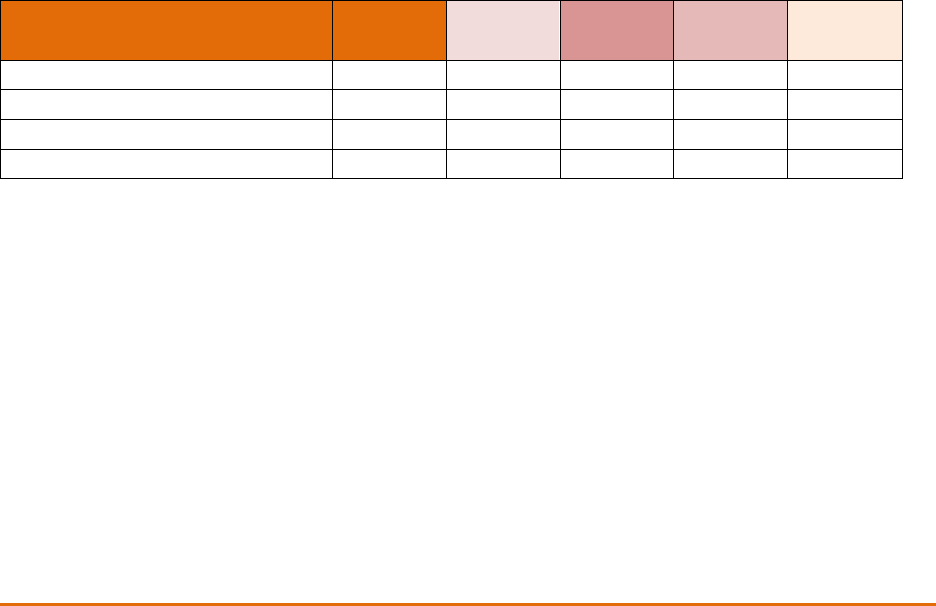
CALIFORNIA TRAFFIC SAFETY SURVEY 2023 DATA ANALYSIS 4
SUMMARY OF FINDINGS
Biggest Safety Concern (Q2)
“Speeding/Aggressive Driving” was the biggest safety concern for 76.6% of surveyed drivers of the
panel, followed by “Distracted Driving because of TEXTING” and “Drunk Driving,” mentioned by 74.2%
and 68.6% drivers, respectively (Table Q2_2).
Behavioral Changes due to COVID-19 (COVID)
Although “Aggressive Driving / Road Rage” remained the most frequently given response as the biggest
behavioral change noticed since the onset of the COVID-19 pandemic, “Distracted Driving because of
Talking and/or Texting” saw a significant increase in response compared to 2022 - 15.5% in 2022 to
19.1% in 2023 (Table COVID_1).
Most Serious Distraction (Q3)
“Texting or Checking Phone While Driving” continues to be the most serious distraction on California
roadways, reported by 72.4% of drivers (Table Q3_1), with a similar distribution across all California
regions (Table Q3_2).
Near Crash Due to Talking/Texting (Q6)
There was a statistically significant increase of 3.8% in the number of respondents having been hit or
nearly hit by a driver who was talking or texting on cell phone, as compared to 2022 (Table Q6).
Recall of Traffic Safety Outreach Campaigns (Q8a-Q8e)
Almost half of the drivers recalled the safety campaign “Don’t Let Drunk, or ‘High’ Drive”, with a
significant increase of 4.9% compared to 2022 (Table Q8c). A new safety campaign introduced in 2023,
“Get Off Your Apps” was recalled by 16.9% respondents, with comparable distribution across all
California regions.
Campaign
Recall
Rate 2023
Recall
Rate 2022
Recall
Rate 2021
Recall
Rate 2020
Recall
Rate 2019
“Go Safely California”
31.1%
28.5%
35.4%
30.2%
16.4%
“Slow the Fast Down”
21.5%
17.5%
19.1%
--
--
“Don’t Let Drunk, or ‘High’ Drive”
49.4%
44.5%
--
--
--
“Get Off Your Apps”
16.9%
--
--
--
--
Alcohol-Impaired Driving (Q9)
Almost two-thirds (64.6%) of the respondents reported to not have driven when they thought they had
too much alcohol to drive safely in the past six months (Table Q9_1). The decrease of 4.4% compared to
2022 was statistically significant.
Recall of Sobriety Checkpoints (Q11)
The recall of sobriety/DUI checkpoints in the past six months saw a statistically significant increase of
4.2% this year, as compared to 2022 wave (Table Q11_1). The regional distribution also shows a
significantly higher recall by Central California drivers, compared to Northern and Southern California
(Table Q11_2).

CALIFORNIA TRAFFIC SAFETY SURVEY 2023 DATA ANALYSIS 5
Chances of Being Ticketed for Speeding (Q18)
There were no significant changes in the number of drivers in their perceived likelihood of being ticketed
for driving over speed limit on residential streets between 2023 and 2022. However, the regional
distribution of the responses shows a significantly higher percentage of Central California drivers
(30.9%) believe it to be “Very Likely” to get a ticket for driving over speed limit on residential streets,
while a significantly higher number of Northern California Drivers (29.0%) believe it to be “Somewhat
Unlikely” (Table Q18).
Perception of Components of Safe System Approach (Safe1)
All five factors of the Safe System Approach were rated as “Very Important” by the majority of the
respondents, similar to 2022, with “Improve safe streets design to design roads that support all road
users, including drivers, pedestrian, bicyclists and transit” being the highest rated factor of all in 2023
(Table Safe1).
Most Important Factor Resulting in Traffic Injuries/Fatalities (Safe2)
Overall, and across all California regions, “Driver behavior” was reported to be the most important
factor resulting in traffic injuries/fatalities (Table Safe2). There was no significant difference between
2022 and 2023 data.
Sharing Road with Bicyclists when Driving (Q22)
A survey item added in 2022, showed similar distribution in responses, where more than half of the
respondents (54.5%) reported to be comfortable sharing the road with bicycles “when there is a
protected bike lane divider” (Table Q22). There were no statistically significant differences between
California regions, as well as compared to the 2022 data.
Safety Problems Experienced as Pedestrian or Bicyclist (Q23)
“Cars going too fast” continues to be the most reported safety problems experienced as a pedestrian or
bicyclist consistent with previous years’ data (Table Q23_1 and Q23_2), as reported by 57.1% of the
respondents. This is followed by “Cars not stopping” and “Distracted drivers using cell phones”, reported
by 53.0% and 40.8% of the respondents, respectively.

CALIFORNIA TRAFFIC SAFETY SURVEY 2023 DATA ANALYSIS 6
OVERVIEW OF 2023 STUDY
Similar to the survey waves since 2020, the 2023 California Traffic Safety Public Opinion Study was
conducted by Ewald & Wasserman Research (E&W) on behalf of the California Office of Traffic Safety
(OTS) and the Safe Transportation Research and Education Center of UC Berkeley (SafeTREC), with an
online self-administered survey. Survey panelists were provided through Marketing Services Group, a
commercial sample and panel vendor.
The eligibility criteria for participating in the study were possessing a valid California driver’s license and
being 18 years or older. Eligible respondents were forwarded to an online survey portal programmed
and managed by E&W. To manage the sample composition and to ensure a similar distribution of age
and gender compared to the California census and previous waves of the Traffic Safety Study, quotas by
gender and six age groups were implemented.
Participation in the survey was anonymous, and a total of 2,815 responses were collected in April, 2023.
This report describes the findings of the 2023 Traffic Safety Public Opinion Study, along with a
comparison of previous years of data, which include opinions from a representative sample of California
drivers on a range of factors affecting traffic safety.
SURVEY DATA ANALYSIS AND COMPARISON WITH PREVIOUS
YEARS
Since 2020, in light of the COVID-19 pandemic, the data for the survey were
collected using online panels, as compared to the previous waves from
2010 through 2019, which were intercepts with survey respondents. The
intercept surveys, as administered by trained field staff, recorded
responses where the response options were not read to the respondents.
In the online survey format, the response options were all presented to the
respondents. This resulted in a greater number of responses particularly for
the multiple response questions, and very few open-ended responses.
While this facilitated a more direct comparison of results between the
waves since 2020, comparison of the current survey data with the waves
before 2020 should take the difference in modality as well as the impact of
COVID-19 on perception and driving behavior of California drivers into account.
The survey items related to the Safe System approach introduced by the U.S. Department of
Transportation
(https://safety.fhwa.dot.gov/zerodeaths/docs/FHWA_SafeSystem_Brochure_V9_508_200717.pdf), that
were first introduced in 2022, continued to be a part of the survey in 2023 as well. In 2023, questions
about a new safety campaign were also introduced.
In this report, the statistically significant differences between different California regions are highlighted
in the respective region column. Similarly, the statistically significant differences between 2023 and
2022 data are highlighted in the 2023 data column. Every effort has been made to match the 2023
sample with previous waves by age, gender, and geographic region, to minimize the effects of sample
differences between data collection years.
2,815 drivers
participated in the
survey, resulting in
an overall confidence
interval of +/- 1.85,
at a confidence level
of 95%.
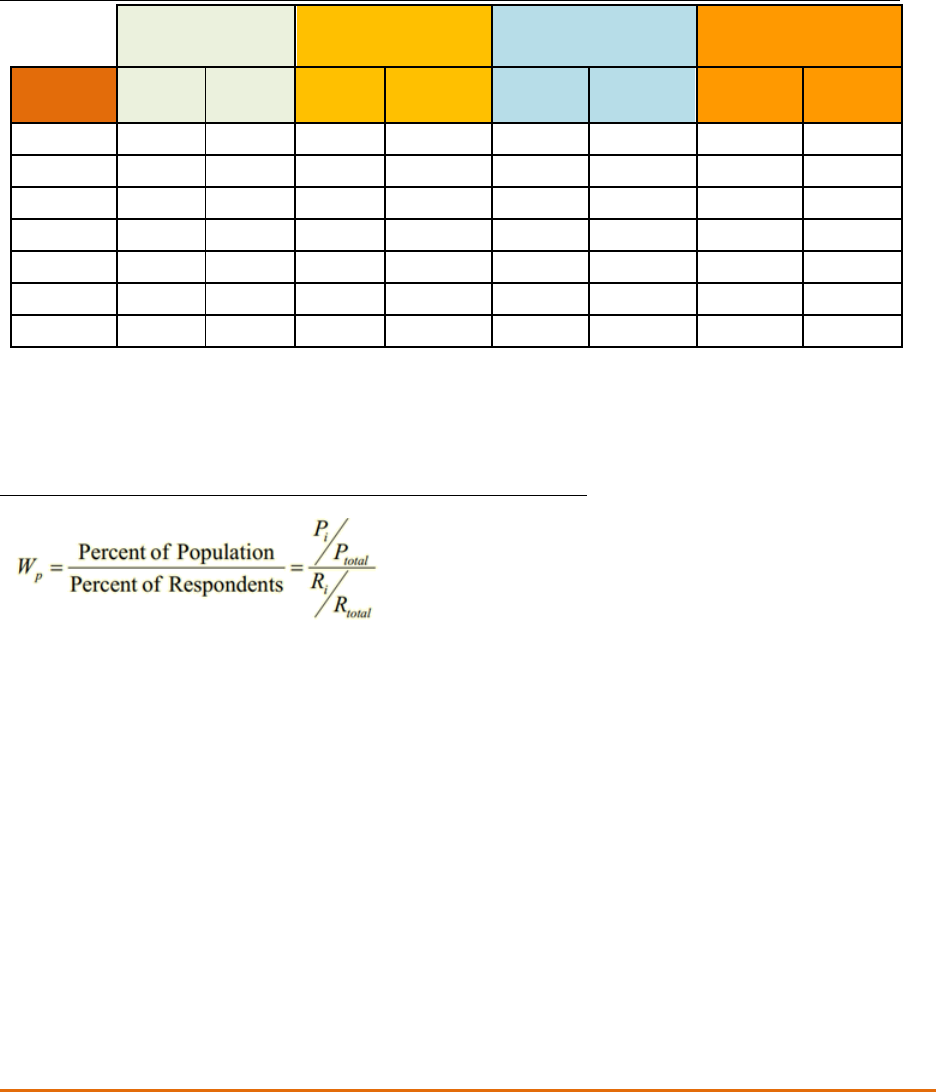
CALIFORNIA TRAFFIC SAFETY SURVEY 2023 DATA ANALYSIS 7
Data Weights
As in the previous years, the data collected in 2023 were weighted to the California adult population by
age and gender ratios derived from the 2021 American Community Survey 5-year estimates to provide
more representativeness to the entire State of California. The overall sample distribution was close to
the 2021 Census data in age and gender distribution, and the applied weights only resulted in minor
adjustments to the survey data. The Census data, summarized survey data, and calculated weights
applied to the data and calculations are shown in Table Weights by Age and Gender.
Table Weights by Age and Gender. Census data, survey results and proportional weight calculation
Census Data*
Survey Data
Weights
Weighted
Survey Data
Age
Range
Male
Female
Male
Female
Male
Female
Male
Female
18-24
51.3%
48.7%
40.8%
59.2%
1.26
0.82
51.3%
48.7%
25-34
51.4%
48.6%
56.2%
43.8%
0.91
1.11
51.4%
48.6%
35-44
50.9%
49.1%
43.6%
56.4%
1.17
0.87
50.9%
49.1%
45-54
50.3%
49.7%
41.2%
58.8%
1.22
0.85
50.3%
49.7%
55-70
48.8%
51.2%
57.8%
42.2%
0.84
1.21
48.8%
51.2%
71 +
43.7%
56.3%
55.8%
44.2%
0.78
1.27
43.7%
56.3%
Average
50.0%
50.0%
48.7%
51.3%
1.03
0.97
50.0%
50.0%
*Source: Census.gov: ACS DEMOGRAPHIC AND HOUSING ESTIMATES 2021 American Community Survey 5-year estimates
The population weights for gender were calculated based on the proportional weight calculation
formula in the Table Weights Formula.
Table Weights Formula. Proportional weight calculation formula
Analysis Notes
The 2023 Traffic Safety survey used a convenience sample of a commercially available online panel,
similar to the waves since 2020. The survey findings summarized in this report are based on a sample
size similar to previous years’ data collection and tests for significance were calculated and will be noted
where applicable.
⮊ All tables in this report are based on valid answers provided, excluding
“Don’t know” and “Prefer not to answer” response options; therefore, the
total number of responses varies by table. Additionally, not all questions
were displayed to all respondents due to skip patterns programmed in the
survey.
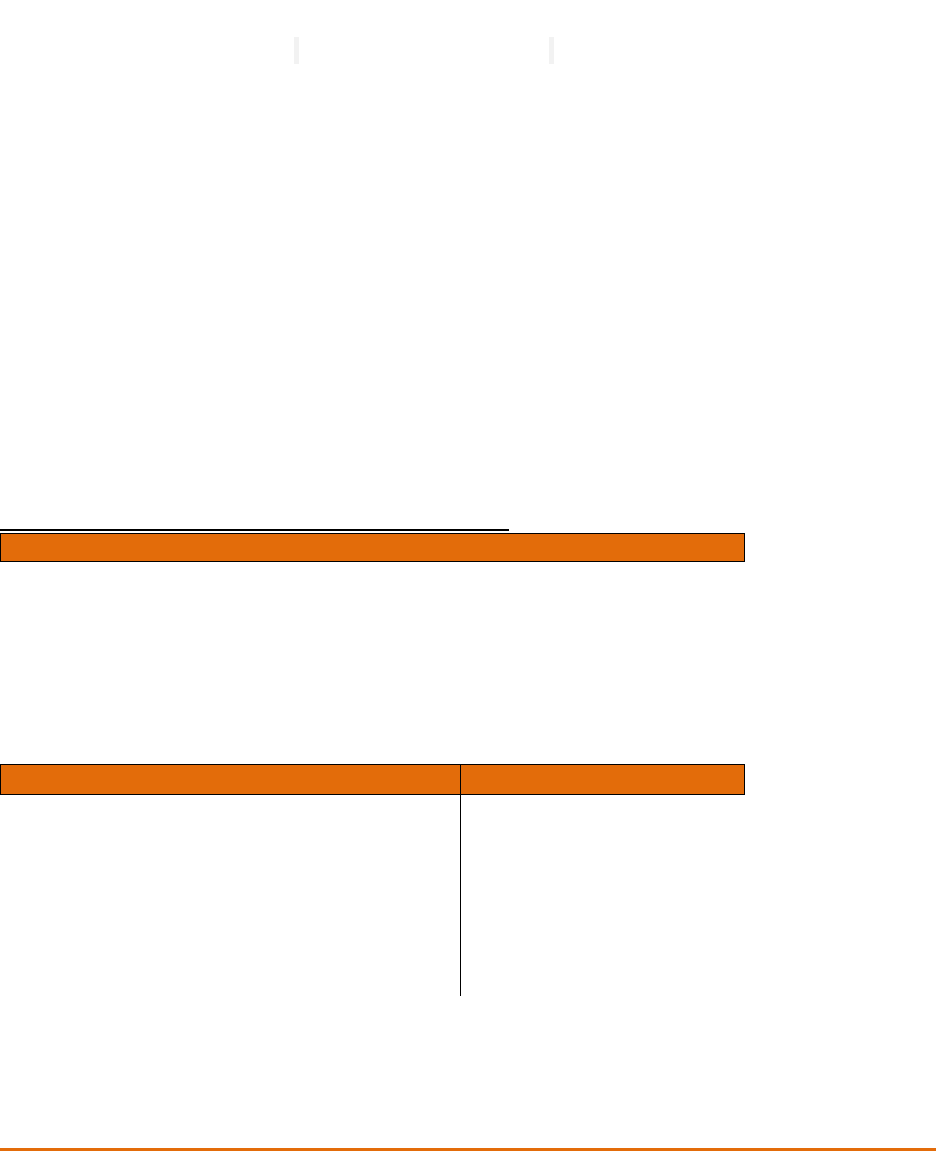
CALIFORNIA TRAFFIC SAFETY SURVEY 2023 DATA ANALYSIS 8
⮊ For multiple choice questions, a respondent could give more than one
answer. The listed “Percent of cases” column in respective tables are
calculated from the total number of respondents who answered a question.
The resulting percentage is more than 100.0% and reflects the percentage
of respondents who selected the answer, not the percentage of total
answers given, which would add up to 100.0%.
⮊ The findings are reported weighted, with the data weights applied as
outlined in Table Weights by Age and Gender.
⮊ The significances outlined refer to a two-tailed probability with the resulting
value of “z” and a p value indicating the difference between the listed (and
assumed independent) proportion of drivers interviewed per wave. Where
applicable, the significant differences calculated were adjusted for pairwise
comparisons using the Bonferroni correction. Significant findings in table
cells are highlighted in orange.
⮊ The survey version used was same as the 2022 survey instrument, with the
addition of one question about a new safety campaign.
Region Variable
All California counties were included in the 2023 survey, as in the previous waves of online surveys. The
counties the panelists reported to live in were then used to create the Region variable: “Northern
California”, “Central California” and “Southern California”, as outlined in the table below (Table R1).
Table R1. Three geographic region definitions by county
Northern California
Alameda
El Dorado
Mendocino
San Francisco
Sutter
Alpine
Glenn
Modoc
San Mateo
Tehama
Amador
Humboldt
Napa
Santa Clara
Trinity
Butte
Lake
Nevada
Shasta
Yolo
Colusa
Lassen
Placer
Siskiyou
Yuba
Contra Costa
Marin
Plumas
Solano
Del Norte
Mariposa
Sacramento
Sonoma
Central California
Southern California
Calaveras
Monterey
Tulare
Imperial
Fresno
San Benito
Tuolumne
Los Angeles
Inyo
San Joaquin
Orange
Kern
San Luis Obispo
Riverside
Kings
Santa Barbara
San Bernardino
Madera
Santa Cruz
San Diego
Merced
Stanislaus
Ventura

CALIFORNIA TRAFFIC SAFETY SURVEY 2023 DATA ANALYSIS 9
For the 2023 survey, data was collected from 56 counties, with Table R2 showing the number of
completed surveys by county.
Table R2. Completed surveys by county (non-weighted data)
County
Northern
California
Total
County
Central
California
Total
County
Southern
California
Total
Alameda
118
4.2%
Calaveras
5
0.2%
Imperial
15
0.5%
Alpine
3
0.1%
Fresno
101
3.6%
Los Angeles
757
26.9%
Amador
7
0.2%
Inyo
1
0.0%
Orange
200
7.1%
Butte
21
0.7%
Kern
63
2.2%
Riverside
147
5.2%
Colusa
5
0.2%
Kings
9
0.3%
San
Bernardino
139
4.9%
Contra Costa
89
3.2%
Madera
9
0.3%
San Diego
233
8.3%
Del Norte
7
0.2%
Merced
17
0.6%
Ventura
62
2.2%
El Dorado
31
1.1%
Monterey
23
0.8%
Total
1,553
Glenn
3
0.1%
San Benito
3
0.1%
% of total
55.2%
Humboldt
13
0.5%
San Joaquin
41
1.5%
Lake
3
0.1%
San Luis Obispo
19
0.7%
Lassen
1
0.0%
Santa Barbara
30
1.1%
Marin
16
0.6%
Santa Cruz
16
0.6%
Mariposa
3
0.1%
Stanislaus
25
0.9%
Mendocino
10
0.4%
Tulare
25
0.9%
Modoc
1
0.0%
Tuolumne
4
0.1%
Napa
8
0.3%
Total
391
Nevada
8
0.3%
% of total
13.9%
Placer
28
1.0%
Plumas
1
0.0%
Sacramento
140
5.0%
San Francisco
78
2.8%
San Mateo
48
1.7%
Santa Clara
117
4.2%
Shasta
17
0.6%
Siskiyou
1
0.0%
Solano
25
0.9%
Sonoma
37
1.3%
Sutter
6
0.2%
Tehama
5
0.2%
Trinity
1
0.0%
Yolo
14
0.5%
Yuba
6
0.2%
Total
871
% of total
30.9%

CALIFORNIA TRAFFIC SAFETY SURVEY 2023 DATA ANALYSIS 10
The total number of surveys per California region, the unweighted percent of completes per region, as
well as the weighted percentage of completes per region are outlined in Table R3. Consistent with
previous years’ data, the majority of responses (1,553 responses, 55.5% weighted) for the 2023 survey
came from Southern California drivers.
Table R3. Completed surveys by region and year
Region
Number
Completes
Percent
Weighted
Percent
2022
Percent
2021
Percent
2020
Percent
2019
Percent
Northern California
871
30.9%
30.7%
30.8%
28.1%
29.5%
32.6%
Central California
391
13.9%
13.8%
12.4%
12.6%
12.7%
12.6%
Southern California
1,553
55.2%
55.5%
56.8%
59.3%
57.8%
54.9%
Total
2,815
100.0%
100.0%
100.0%
100.0%
100.0%
100.0%
Respondent Demographics
The weighted respondent age and gender distribution in total and by California region, as compared to
previous years, is outlined in Table D1. The results show a slightly lower percentage of 25-34 age-group,
both male and female, as compared with 2022 survey data. The response rate for age groups 18-24 and
55-70, in both male and female, are slightly higher compared to the previous year.
Table D1. Age and gender distribution by geographic regions and year comparison
Gender
Age
Group
Northern
California
Central
California
Southern
California
Total
2022
Total
2021
Total
2020
Total
2019
Total
Male
18-24
18.5%
24.4%
17.8%
19.0%
17.7%
18.7%
10.7%
11.9%
25-34
21.1%
26.4%
20.7%
21.6%
25.6%
20.7%
23.1%
25.0%
35-44
16.2%
14.9%
20.9%
18.6%
18.2%
21.0%
23.6%
25.6%
45-54
16.9%
16.4%
18.1%
17.5%
17.8%
19.2%
25.1%
19.8%
55-70
21.5%
14.9%
18.2%
18.8%
16.6%
16.7%
14.6%
14.8%
71 or older
5.9%
3.0%
4.3%
4.6%
4.0%
3.6%
2.9%
3.0%
Total
100.0%
100.0%
100.0%
100.0%
100.0%
100.0%
100.0%
100.0%
Female
18-24
16.2%
21.3%
18.4%
18.1%
17.0%
17.7%
10.1%
17.1%
25-34
18.7%
25.1%
20.7%
20.7%
24.2%
19.5%
21.7%
25.3%
35-44
17.6%
15.8%
18.8%
18.0%
17.9%
20.6%
23.3%
19.3%
45-54
18.7%
20.2%
16.0%
17.4%
18.2%
19.4%
25.2%
19.9%
55-70
21.3%
14.8%
20.2%
19.8%
17.9%
17.9%
15.9%
15.5%
71 or older
7.5%
2.7%
5.9%
6.0%
4.8%
4.9%
3.9%
2.9%
Total
100.0%
100.0%
100.0%
100.0%
100.0%
100.0%
100.0%
100.0%
The distribution of respondent gender by region is shown in Table D2.
Table D2. Gender distribution by geographic regions
Gender
Northern
California
Central
California
Southern
California
Total
Male
50.1%
52.6%
49.6%
50.2%
Female
49.9%
47.4%
50.4%
49.8%
Total
100.0%
100.0%
100.0%
100.0%
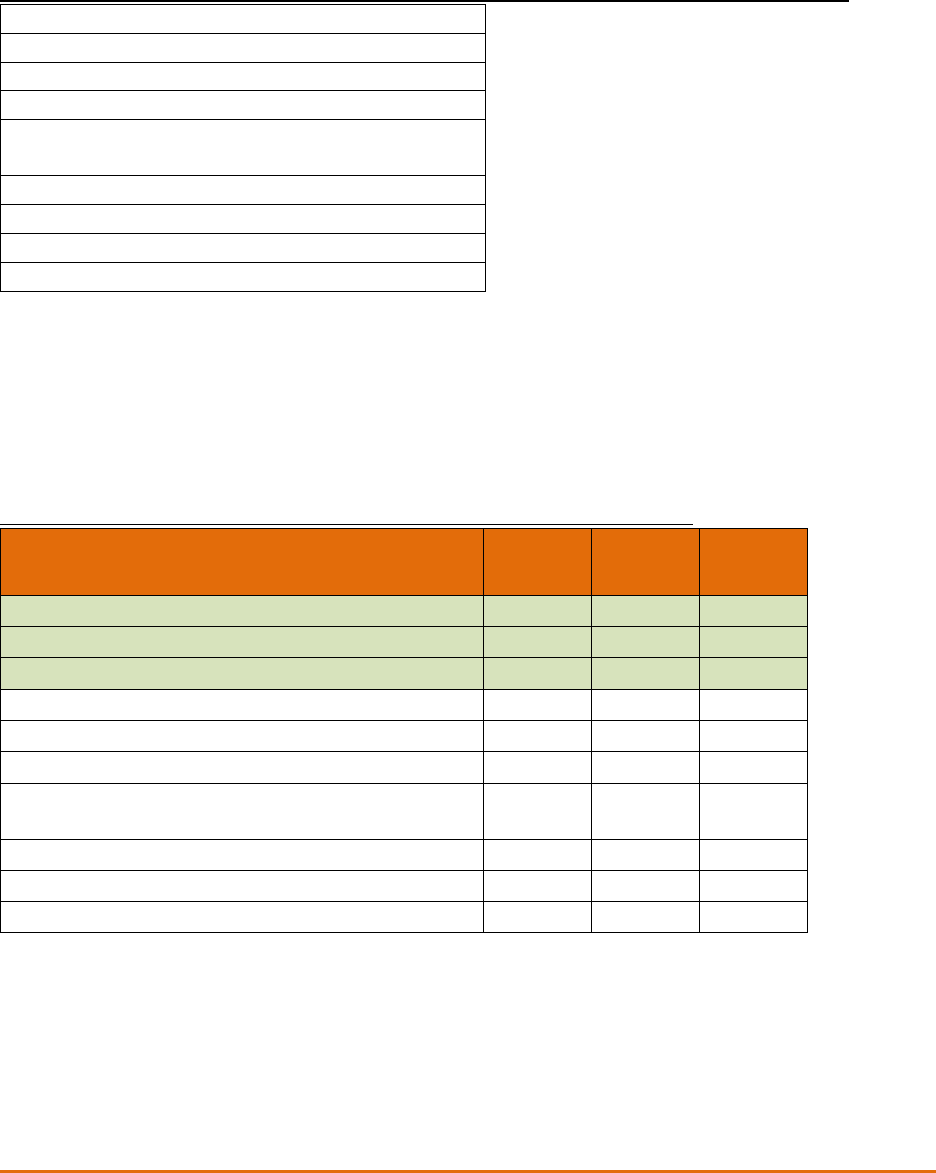
CALIFORNIA TRAFFIC SAFETY SURVEY 2023 DATA ANALYSIS 11
Safety Concerns (Q2)
The biggest safety concern on California roadways was a multiple-choice question and the answering
options are outlined below in Table Q2_1. The open-ended responses in the “Other”” category did not
warrant any additional categorization.
Table Q2_1. “In your opinion, what are the biggest safety problems on California roadways?”
Drunk Driving
Speeding/Aggressive Driving
Distracted Driving because of TALKING
Distracted Driving because of TEXTING
Internal Car Distractions (passengers, eating,
grooming, adjusting radio/stereo)
Bad Road Surfaces
Not Wearing Seatbelts
Drugged Driving
Other (un-coded)
There was a total of 10,672 responses provided to the question of the perceived biggest safety concern
on California roadways. The most frequently mentioned response was “Speeding/Aggressive Driving”
which accounted for 19.7% of all answers given, and was mentioned by over three-quarters (76.6%) of
the respondents. This was followed by “Distracted Driving because of TEXTING” and “Drunk Driving”,
mentioned by 74.2% and 68.6% of all respondents respectively (Table Q2_2). The top three safety
concerns on California roadways are highlighted in green in the table below.
Table Q2_2. Frequencies of Q2 by percent of answers and percent of drivers
Q2 all answers combined
Count
% of
Answers
% of
Drivers
Speeding/Aggressive Driving
2,097
19.7%
76.6%
Distracted Driving because of TEXTING
2,031
19.0%
74.2%
Drunk Driving
1,878
17.6%
68.6%
Bad Road Surfaces
1,350
12.6%
49.3%
Drugged Driving
1,158
10.8%
42.3%
Distracted Driving because of TALKING
837
7.8%
30.6%
Internal Car Distractions (passengers, eating,
grooming, adjusting radio/stereo)
626
5.9%
22.9%
Not Wearing Seatbelts
607
5.7%
22.2%
All Other Responses Combined
87
0.8%
3.2%
Total
10,672
100.0%
389.7%
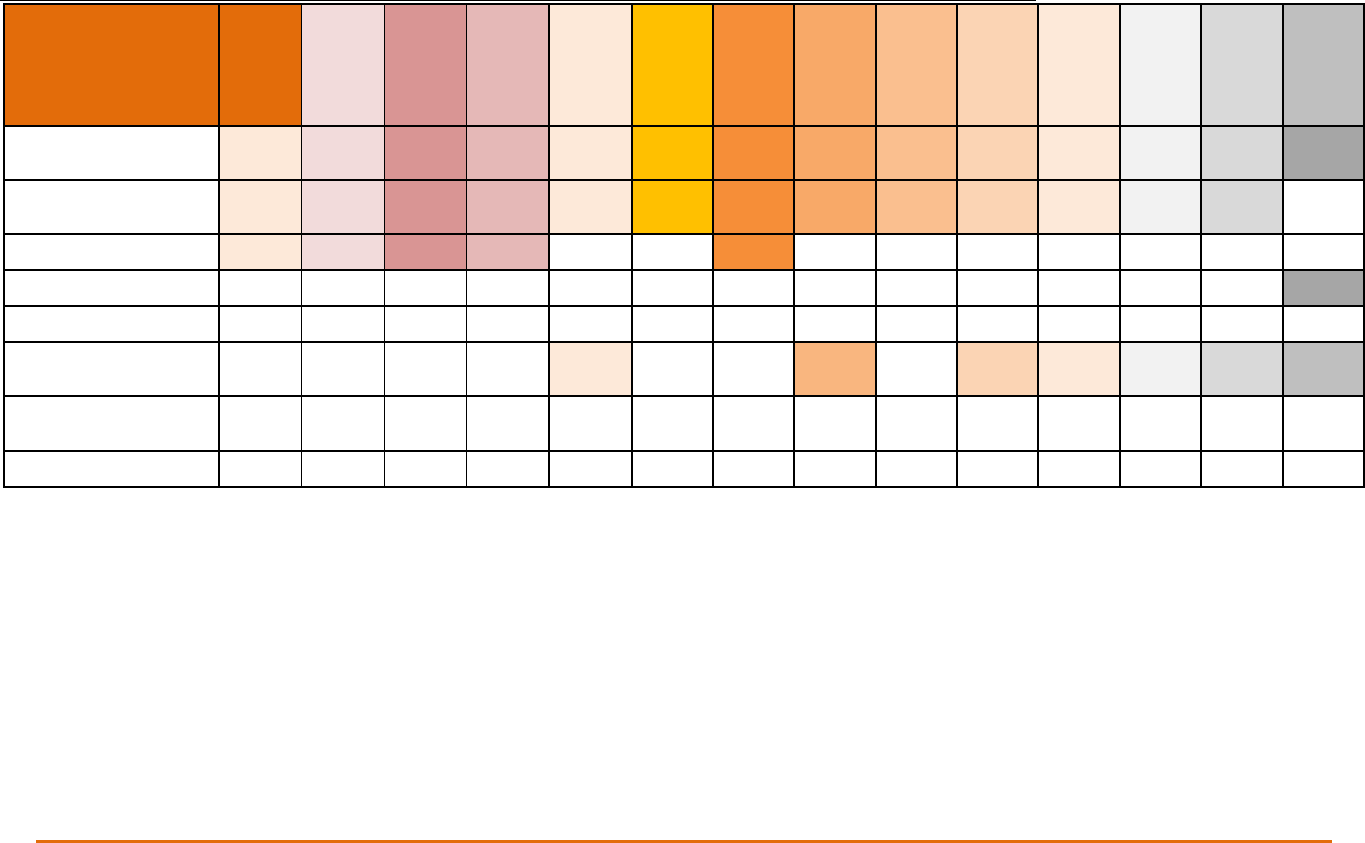
CALIFORNIA TRAFFIC SAFETY SURVEY 2023 DATA ANALYSIS 12
The most frequently mentioned responses to the biggest safety concern on California roadways, as compared to the previous years, are shown in
Table Q2_3, with the three highest percentage answers in each year highlighted. Consistent to all previous years, “Speeding/Aggressive Driving”
and “Distracted Driving because of Texting” remain the top most safety concerns, followed closely by “Drunk Driving”.
Table Q2_3. Frequencies of top six responses to Q2 by percent of answers provided and by year of data collection
Q2 all Answers
Combined
% Answers
2023
% Answers
2022
% Answers
2021
% Answers
2020
% Answers
2019
% Answers
2018
% Answers
2017
% Answers
2016
% Answers
2015
% Answers
2014
% Answers
2013
% Answers
2012
% Answers
2011
% Answers
2010
Speeding/Aggressive
Driving
19.7%
19.6%
18.8%
19.1%
20.3%
19.4%
27.7%
19.2%
18.1%
20.2%
14.3%
15.6%
17.6%
18.2%
Distracted Driving
because of Texting
19.0%
18.7%
18.9%
19.8%
19.4%
16.9%
14.7%
18.2%
16.1%
21.2%
20.3%
17.1%
18.5%
9.9%
Drunk Driving
17.6%
17.6%
17.5%
17.9%
9.2%
6.5%
22.9%
5.6%
6.6%
6.2%
5.7%
4.3%
12.6%
7.9%
Bad Road Surfaces
12.6%
11.8%
10.9%
10.5%
11.0%
15.3%
3.8%
12.2%
13.0%
10.4%
9.2%
11.4%
11.6%
11.6%
Drugged Driving
10.8%
11.0%
11.2%
10.6%
1.8%
1.3%
1.5%
--
--
--
--
--
--
--
Distracted Driving
because of Talking
7.8%
8.3%
9.0%
9.0%
15.7%
14.2%
11.9%
13.8%
11.7%
18.0%
16.0%
18.3%
20.3%
15.8%
All other responses
combined
12.5%
13.0%
13.7%
13.1%
22.6%
26.4%
17.5%
31.0%
34.5%
24.0%
34.5%
33.3%
19.4%
36.6%
Total responses
100.0%
100.0%
100.0%
100.0%
100.0%
100.0%
100.0%
100.0%
100.0%
100.0%
100.0%
100.0%
100.0%
100.0%
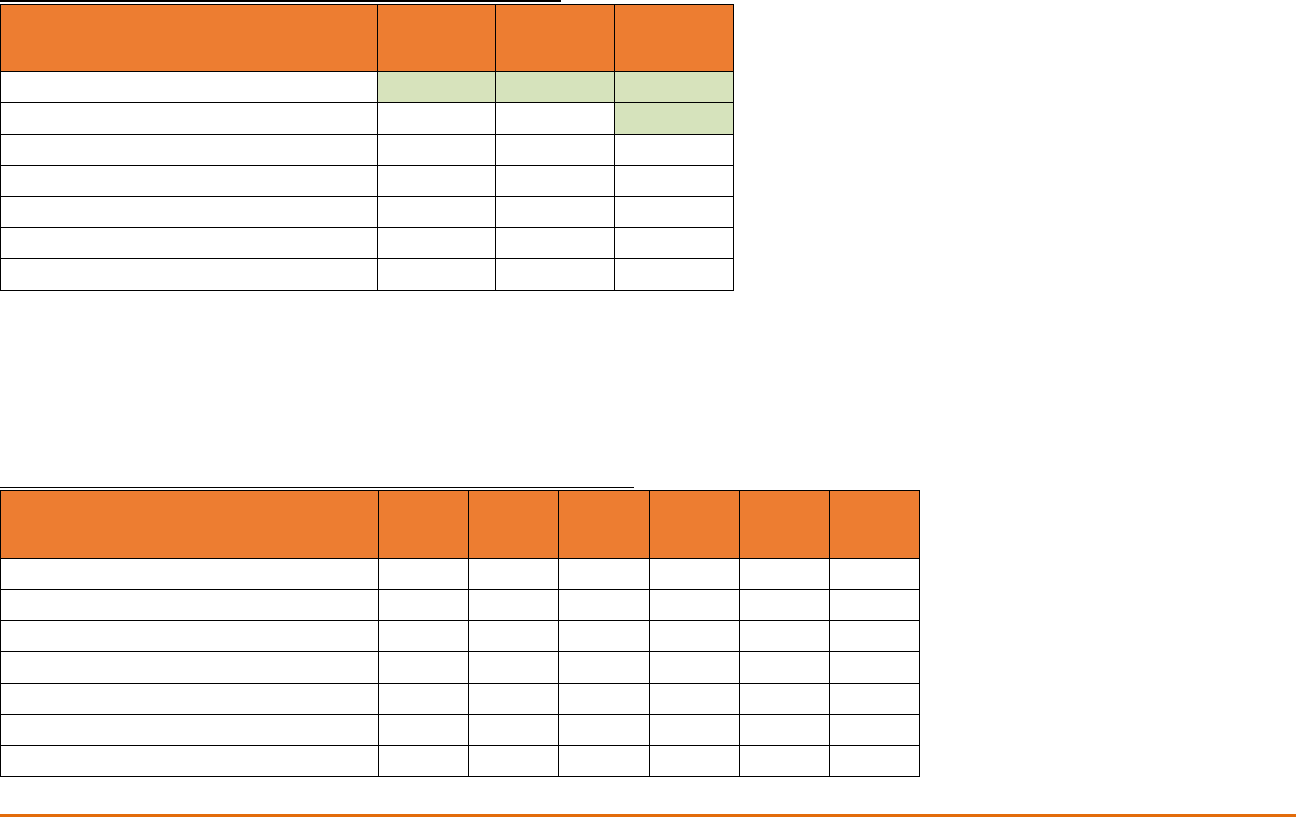
CALIFORNIA TRAFFIC SAFETY SURVEY 2023 DATA ANALYSIS 13
Safety Concerns (Q2) by California Region
The biggest safety concern by California region is shown in Table Q2_4 (highest percentage answer highlighted), with “Speeding/Aggressive
Driving” being the most frequently mentioned response across all California regions. However, in Southern California, drivers mentioned
“Distracted Driving because of Texting” as the biggest safety concern on California roadways along with “Speeding/Aggressive Driving”.
Table Q2_4. Frequencies of top five safety concerns by region
Q2 by Region
Northern
California
Central
California
Southern
California
Speeding/Aggressive Driving
20.2%
18.6%
19.6%
Distracted Driving because of TEXTING
18.5%
18.0%
19.6%
Drunk Driving
17.6%
18.0%
17.5%
Bad Road Surfaces
13.1%
13.5%
12.2%
Drugged Driving
11.0%
11.4%
10.6%
All other responses combined
19.6%
20.5%
20.5%
Total
100.0%
100.0%
100.0%
Safety Concerns (Q2) by Age
The cross-tabulation of stated safety concerns by age group are shown in Table Q2_5. In age group 18-24, “Drunk Driving” was the biggest safety
concern, while “Distracted Driving because of Texting” remains top safety concern for the age group 45-54, while all other age groups noted
“Speeding/Aggressive Driving”.
Table Q2_5. Cross-tabulation of top five safety concerns by age group
Q2 by Age
18-24
25-34
35-44
45-54
55-70
71 or
older
Speeding/Aggressive Driving
20.3%
19.6%
19.2%
19.4%
19.8%
19.4%
Distracted Driving because of TEXTING
18.0%
18.8%
18.8%
19.9%
19.6%
18.8%
Drunk Driving
20.7%
18.7%
17.0%
16.5%
15.7%
16.2%
Bad Road Surfaces
10.7%
12.9%
13.6%
13.7%
12.6%
12.0%
Drugged Driving
11.0%
10.1%
9.9%
11.4%
11.6%
11.6%
All other responses combined
19.3%
19.9%
21.5%
19.1%
20.7%
22.0%
Total
100.0%
100.0%
100.0%
100.0%
100.0%
100.0%

CALIFORNIA TRAFFIC SAFETY SURVEY 2023 DATA ANALYSIS 14
Behavioral Changes due to COVID-19 (COVID) by California Region
The perceived change in driving behavior since the onset of the COVID-19 pandemic, a question added to the survey in 2021, saw the trend
continue where California drivers stated “Aggressive Driving/Road Rage” most frequently across all three regions. Table COVID_1 shows the
distribution of answers across the California regions, as well as the comparison with 2022 and 2021 answers. While most of the answers remain
quite similar to the previous waves, “Distracted Driving because of Talking and/or Texting” saw a significant rise since 2022 (p<0.01).
Table COVID_1. “Since the onset of the COVID-19 pandemic, what is the biggest change in behaviors you have noticed from drivers?” by region
COVID by Region
Northern
California
Central
California
Southern
California
Total
2023
Total
2022
Total
2021
Aggressive Driving/Road Rage
32.6%
28.7%
35.6%
33.8%
34.7%
26.5%
Have Not Noticed Any Changes
21.0%
24.2%
20.5%
21.1%
23.3%
23.8%
Speeding
19.3%
14.9%
14.9%
16.2%
18.5%
24.2%
Distracted Driving because of TALKING
and/or TEXTING
17.9%
20.5%
19.5%
19.1%
15.5%
16.4%
Impaired Driving
5.9%
8.0%
5.5%
6.0%
4.2%
5.7%
Not Wearing Seatbelts
1.9%
2.1%
2.6%
2.3%
2.1%
1.8%
Other (uncoded)
1.4%
1.6%
1.4%
1.4%
1.8%
0.3%
Total
100.0%
100.0%
100.0%
100.0%
100.0%
100.0%
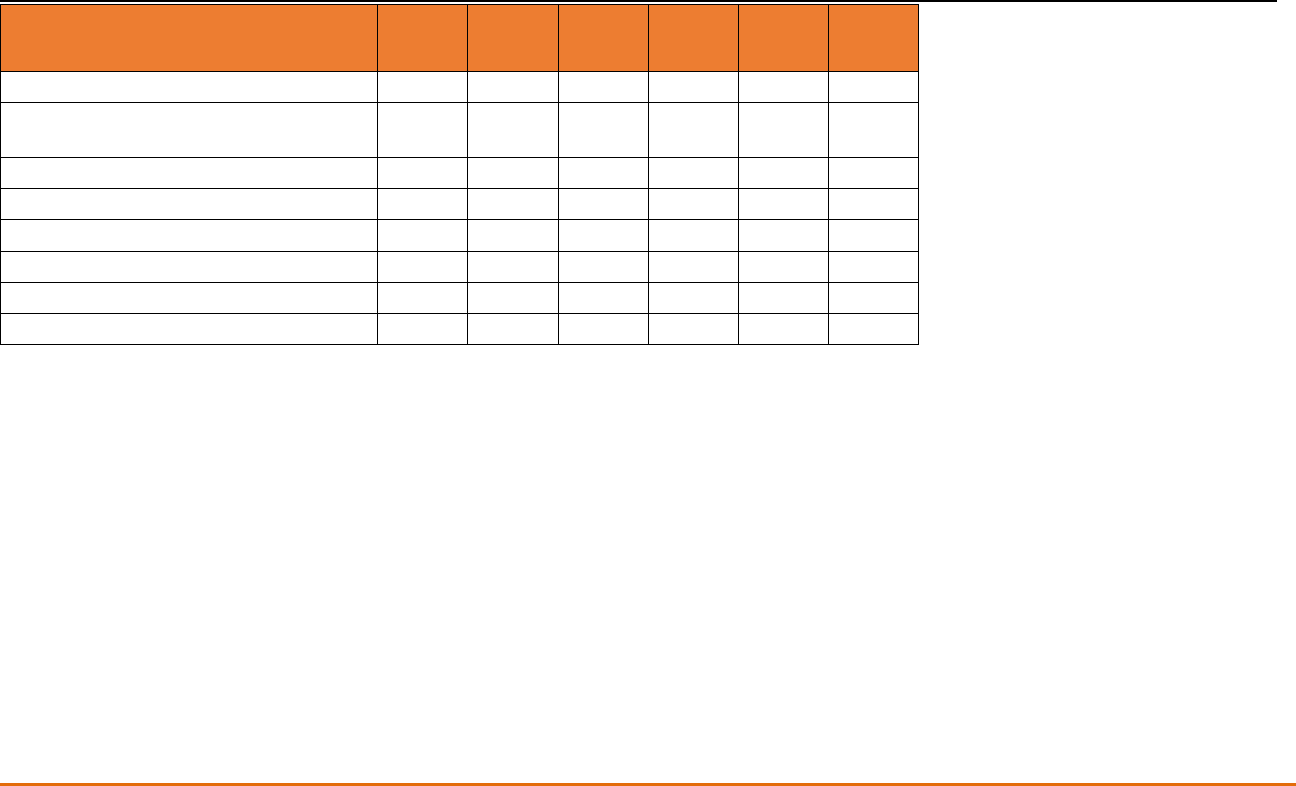
CALIFORNIA TRAFFIC SAFETY SURVEY 2023 DATA ANALYSIS 15
Behavioral Changes due to COVID-19 (COVID) by Age
While drivers of all age groups stated “Aggressive Driving/Road Rage” as the biggest change in behavior since the onset of the COVID-19
pandemic (Table COVID_2), “Distracted Driving because of Talking and/or Texting” remains the second most frequently stated change in
behavior for the drivers aged 18-24, while drivers of other age groups state not to have noticed any changes as the second most frequently cited
response.
Table COVID_2. “Since the onset of the COVID-19 pandemic, what is the biggest change in behaviors you have noticed from drivers?” by age
COVID by Age
18-24
25-34
35-44
45-54
55-70
71 or
older
Aggressive Driving/Road Rage
26.2%
34.0%
32.3%
38.1%
39.4%
28.5%
Distracted Driving because of TALKING
and/or TEXTING
24.0%
17.4%
16.2%
19.6%
17.7%
23.6%
Have Not Noticed Any Changes
20.0%
17.5%
23.6%
21.2%
22.4%
25.7%
Speeding
19.6%
17.0%
16.0%
13.3%
15.2%
16.7%
Impaired Driving
5.6%
8.2%
7.6%
4.8%
3.4%
4.9%
Not Wearing Seatbelts
3.4%
5.0%
2.2%
1.2%
0.4%
0.0%
Other (uncoded)
1.2%
0.9%
2.2%
1.7%
1.5%
0.7%
Total
100.0%
100.0%
100.0%
100.0%
100.0%
100.0%

CALIFORNIA TRAFFIC SAFETY SURVEY 2023 DATA ANALYSIS 16
Most Serious Distraction (Q3) by Survey Wave
The survey item about the most serious distraction for drivers has been a part of the survey since 2010. While the first three years until 2012,
“Talking on Phone While Driving” was the most frequently given answer, since 2013 “Texting or Checking Phone While Driving” has remained the
most frequently given answer as the most serious distraction for drivers (Table Q3_1, most frequent response highlighted).
Note: Some of the answering choices provided were phrased slightly differently since the 2021 survey; the minor wording changes of the
response choices are outlined below the table.
Table Q3_1. Frequencies of Q3 by survey year
Q3
Total
2023
Total
2022
Total
2021
Total
2020
Total
2019
Total
2018
Total
2017
Total
2016
Total
2015
Total
2014
Total
2013
Total
2012
Total
2011
Total
2010
Texting or Checking
Phone While Driving*
72.4%
71.9%
69.7%
68.5%
46.7%
44.5%
50.8%
44.1%
39.0%
51.8%
47.9%
37.2%
27.6%
12.7%
Talking on Phone
While Driving
15.0%
14.4%
17.2%
17.4%
23.1%
32.2%
31.9%
33.5%
22.2%
29.5%
33.4%
42.8%
56.0%
61.9%
Car Crashes causing
Rubbernecking***
4.3%
6.3%
5.0%
6.4%
6.2%
5.3%
1.4%
1.7%
1.6%
1.3%
1.4%
2.9%
1.9%
1.9%
Passengers in Car
2.5%
1.7%
2.4%
1.2%
4.1%
2.3%
1.7%
0.6%
1.2%
2.0%
1.5%
1.4%
1.8%
3.3%
Eating While Driving
2.1%
1.9%
2.5%
1.7%
2.4%
0.5%
1.3%
0.6%
1.5%
1.8%
0.5%
0.8%
1.2%
1.9%
Dashboard/Navigation
Systems**
2.1%
1.8%
1.5%
1.7%
2.5%
0.8%
1.3%
1.7%
0.7%
0.9%
0.4%
0.5%
0.5%
0.2%
Roadside Billboards
0.8%
0.7%
1.0%
1.5%
2.3%
1.7%
1.2%
1.5%
2.6%
0.9%
1.8%
1.9%
1.3%
2.1%
All other responses
combined
0.9%
1.3%
0.7%
1.6%
12.7%
12.7%
10.4%
16.3%
31.2%
11.8%
13.1%
12.5%
9.7%
16.0%
Total
100.0%
100.0%
100.0%
100.0%
100.0%
100.0%
100.0%
100.0%
100.0%
100.0%
100.0%
100.0%
100.0%
100.0%
*”Texting while Driving” in 2020 and earlier surveys
**”GPS/Navigation System” in 2020 and earlier surveys
***”Car Crashes/Vehicle Issues” in 2020 and earlier surveys
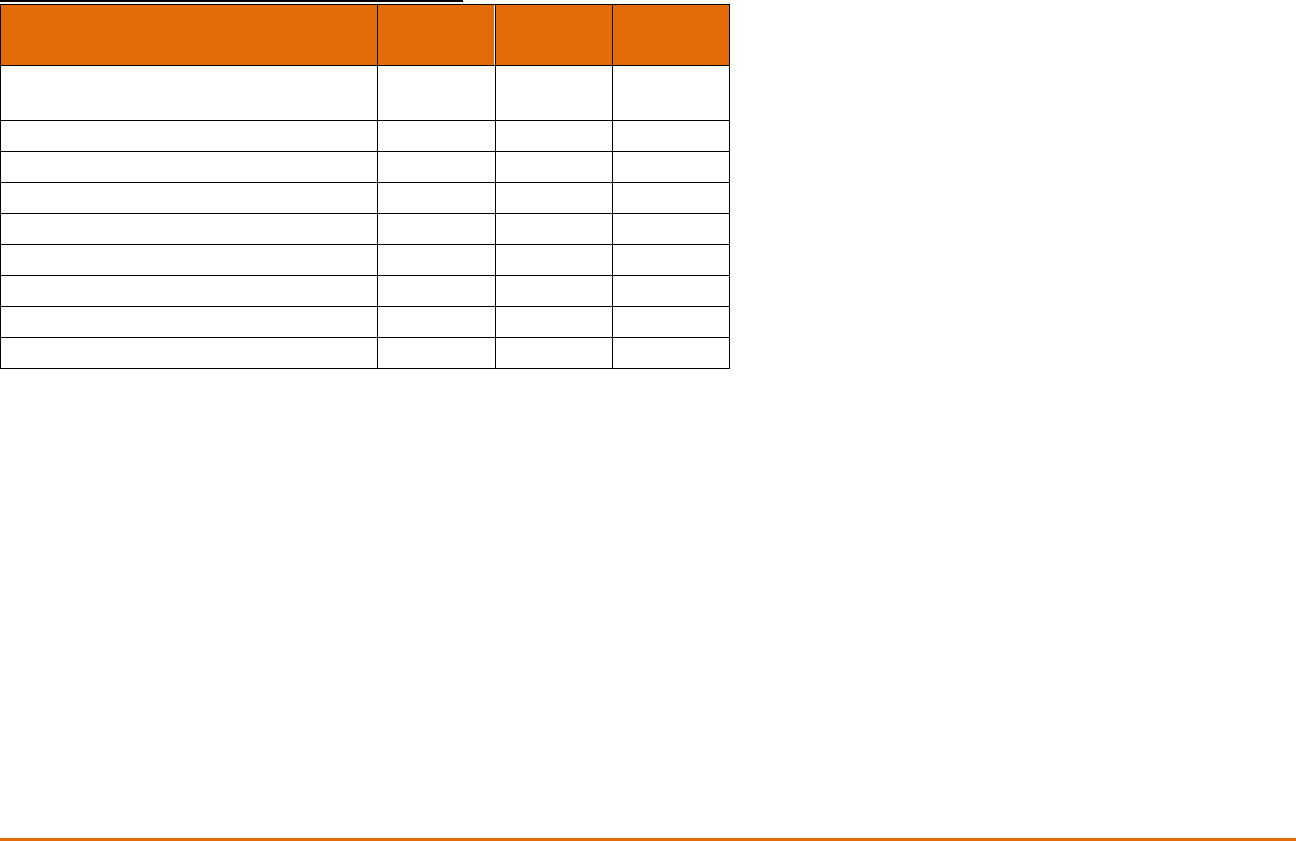
CALIFORNIA TRAFFIC SAFETY SURVEY 2023 DATA ANALYSIS 17
Most Serious Distraction (Q3) by Region
Similar to the overall distribution, “Texting or Checking Phone While Driving” is the most frequently given response across all three California
regions, with a comparable distribution of responses (Table Q3_2).
Table Q3_2. Frequencies of Q3 by California region
Q3 by region
Northern
California
Central
California
Southern
California
Texting or Checking Phone While
Driving
70.5%
72.3%
73.5%
Talking on Phone While Driving
15.0%
16.2%
14.6%
Car Crashes causing Rubbernecking
5.0%
3.7%
3.9%
Passengers in Car
2.9%
1.9%
2.4%
Eating While Driving
2.7%
2.9%
1.6%
Dashboard/Navigation Systems
2.3%
1.6%
2.2%
Roadside Billboards
0.5%
0.8%
0.9%
All Other Responses Combined
1.2%
0.5%
0.8%
Total
100.0%
100.0%
100.0%
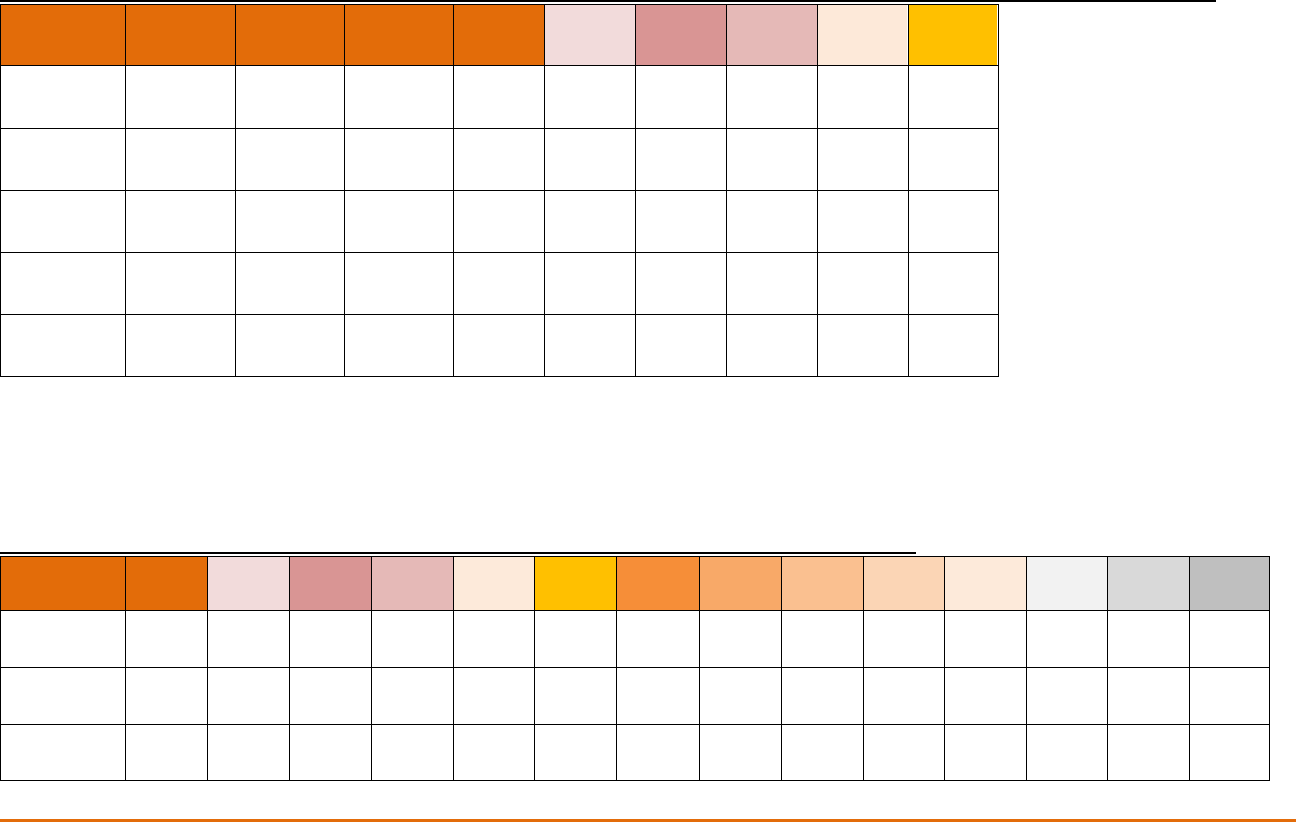
CALIFORNIA TRAFFIC SAFETY SURVEY 2023 DATA ANALYSIS 18
Using Cell Phone in a Non-Hands-Free manner when Driving (Q4) by Region and Wave
Similar to previous years, 30.7% respondents in 2023 stated to have used a cell phone in a non-hands-free manner when driving in the past 30
days (Table Q4). The differences between the three California regions, as well as the total responses between 2023 and 2022 are not statistically
significant.
Table Q4. “How often in the past 30 days have you used a cell phone in a non-hands-free manner when driving?*” by region and year
Q4 by
Region
Northern
California
Central
California
Southern
California
Total
2023
Total
2022
Total
2021
Total
2020
Total
2019
Total
2018
Regularly
105
47
208
360
341
423
428
458
443
12.5%
12.5%
13.7%
13.2%
12.4%
15.2%
15.1%
35.4%
32.0%
Sometimes
132
69
276
477
481
518
528
380
295
15.8%
18.4%
18.2%
17.5%
17.5%
18.6%
18.6%
29.4%
21.3%
Rarely
218
112
414
744
747
792
872
268
298
26.0%
29.9%
27.3%
27.3%
27.2%
28.5%
30.7%
20.7%
21.5%
Never
383
147
617
1,147
1,180
1,046
1,015
188
348
45.7%
39.2%
40.7%
42.0%
42.9%
37.6%
35.7%
14.5%
25.1%
Total
838
375
1,515
2,728
2,749
2,779
2,843
1,294
1,384
100.0%
100.0%
100.0%
100.0%
100.0%
100.0%
100.0%
100.0%
100.0%
* The phrasing of Q4 up to 2021 data collection was: “How often in the past 30 days have you used an electronic wireless device, like a cell phone while driving"?
Driving Mistake Due to Cell Phone Use (Q5) by Wave
Self-reported driving mistakes made while talking or texting on a cell phone saw a 2.1% increase between 2022 and 2023 (Table Q5). However,
this difference is not statistically significant.
Table Q5. “Have you EVER made a driving mistake while talking OR texting on a cell phone?” by year
Q5 by year
Total
2023
Total
2022
Total
2021
Total
2020
Total
2019
Total
2018
Total
2017
Total
2016
Total
2015
Total
2014
Total
2013
Total
2012
Total
2011
Total
2010
Yes
1,165
1,104
1,108
1,263
665
634
670
550
744
858
866
827
802
766
42.7%
40.6%
40.2%
44.7%
51.3%
46.0%
49.3%
43.9%
39.4%
47.1%
45.0%
44.6%
45.8%
46.5%
No
1,563
1,617
1,648
1,561
632
743
690
704
1,143
965
1,060
1,027
951
883
57.3%
59.4%
59.8%
55.3%
48.7%
54.0%
50.7%
56.1%
60.6%
52.9%
55.0%
55.4%
54.2%
53.5%
Total
2,727
2,721
2,756
2,824
1,297
1,377
1,360
1,254
1,887
1,823
1,926
1,854
1,753
1,649
100.0%
100.0%
100.0%
100.0%
100.0%
100.0%
100.0%
100.0%
100.0%
100.0%
100.0%
100.0%
100.0%
100.0%
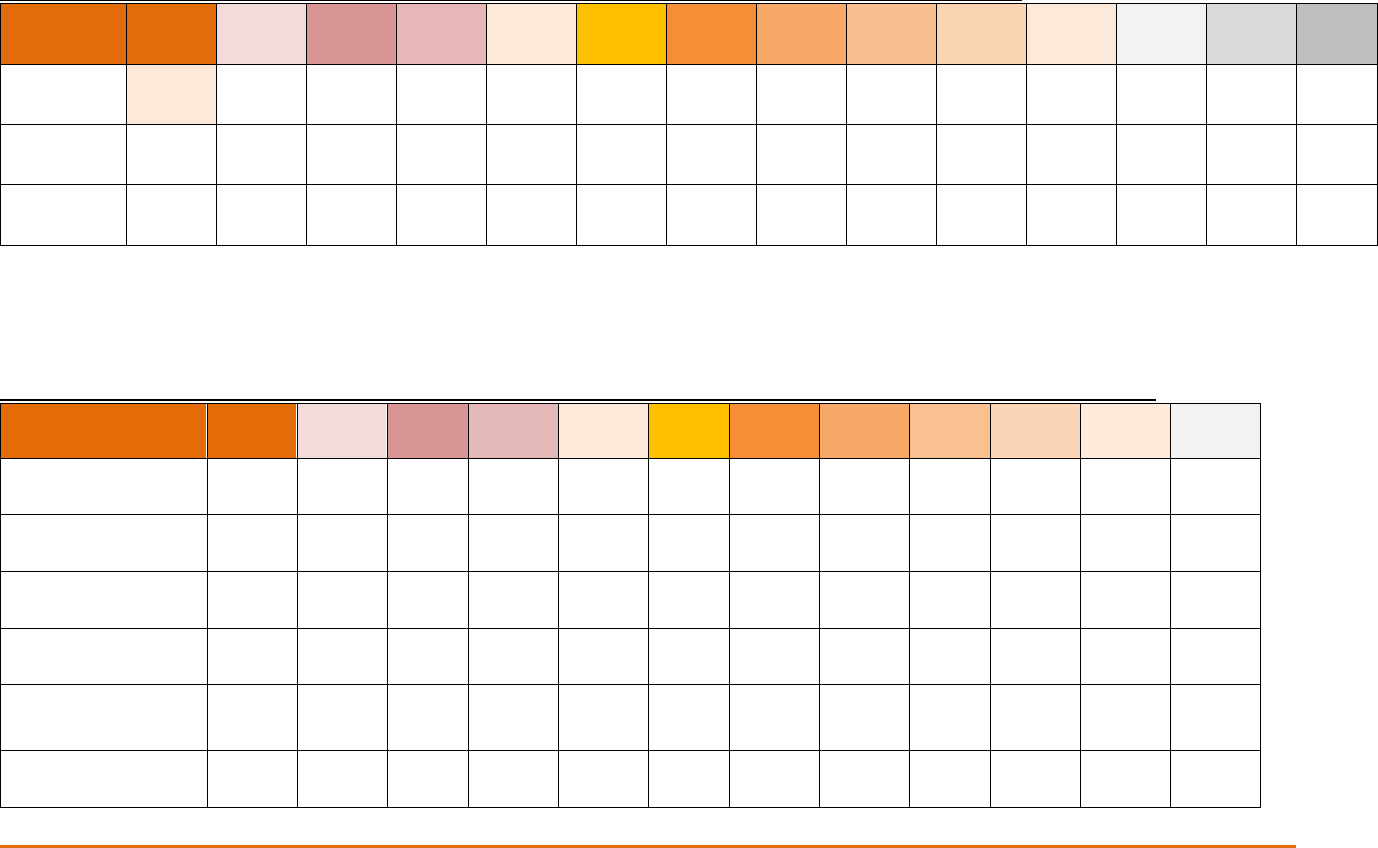
CALIFORNIA TRAFFIC SAFETY SURVEY 2023 DATA ANALYSIS 19
Near Crash Due to Other Driver Talking/Texting on a Cell Phone (Q6) by Wave
Table Q6 shows the number of respondents having been hit or nearly hit by a driver who was talking or texting on a cell phone. While there are
no difference between regions, the 3.8% increase since 2022 is statistically significant at p<0.05.
Table Q6. “Have you EVER been hit or nearly hit by a driver who was talking or texting on a cell phone?” by year
Q6 by year
Total
2023
Total
2022
Total
2021
Total
2020
Total
2019
Total
2018
Total
2017
Total
2016
Total
2015
Total
2014
Total
2013
Total
2012
Total
2011
Total
2010
Yes
1,479
1,370
1,434
1,466
739
852
827
685
1,117
1,098
421
1,067
1,038
912
54.0%
50.2%
51.9%
51.7%
57.9%
62.3%
61.0%
54.6%
59.6%
61.2%
59.5%
60.1%
60.1%
57.5%
No
1,261
1,361
1,330
1,371
538
515
528
570
756
697
286
708
689
673
46.0%
49.8%
48.1%
48.3%
42.1%
37.7%
39.0%
45.4%
40.4%
38.8%
40.5%
39.9%
39.9%
42.5%
Total
2,740
2,732
2,764
2,837
1,277
1,367
1,355
1,255
1,873
1,795
707
1,775
1,727
1,585
100.0%
100.0%
100.0%
100.0%
100.0%
100.0%
100.0%
100.0%
100.0%
100.0%
100.0%
100.0%
100.0%
100.0%
Likelihood of Being Ticketed for Hand-Held Phone Use or Texting (Q7) by Wave
Drivers’ rating of the likelihood of being ticketed for using a hand-held cell phone or texting is shown in Table Q7, with a similar distribution to
previous waves and almost half of respondents stating it to be very or somewhat likely to be ticketed for hand-held cell phone use while driving.
Table Q7. “What do you think is the likelihood of being ticketed for hand-held cell phone use or texting while driving?” by year
Q7 by year
Total
2023
Total
2022
Total
2021
Total
2020
Total
2019
Total
2018
Total
2017
Total
2016
Total
2015
Total
2014
Total
2013
Total
2012
Very Likely
568
593
643
679
269
314
287
272
444
424
493
368
20.7%
21.6%
23.2%
23.9%
21.0%
23.0%
21.2%
21.5%
23.4%
23.4%
26.3%
20.1%
Somewhat Likely
800
778
760
792
288
344
277
265
459
416
599
570
29.2%
28.3%
27.4%
27.9%
22.4%
25.1%
20.4%
21.0%
24.2%
23.0%
31.9%
31.2%
Neither Likely or
Unlikely
438
381
378
391
228
168
197
150
218
210
131
154
16.0%
13.9%
13.6%
13.8%
17.8%
12.3%
14.5%
11.9%
11.5%
11.6%
7.0%
8.4%
Somewhat Unlikely
257
451
444
425
261
250
262
256
361
376
306
356
9.4%
16.4%
16.0%
15.0%
20.3%
18.3%
19.3%
20.3%
19.1%
20.8%
16.3%
19.5%
Very Unlikely
680
546
552
555
238
292
333
320
412
385
349
379
24.8%
19.9%
19.9%
19.5%
18.5%
21.3%
24.6%
25.3%
21.8%
21.3%
18.6%
20.7%
Total
2,743
2,750
2,778
2,841
1,284
1,395
1,356
1,263
1,894
1,811
1,878
1,827
100.0%
100.0%
100.0%
100.0%
100.0%
100.0%
100.0%
100.0%
100.0%
100.0%
100.0%
100.0%

CALIFORNIA TRAFFIC SAFETY SURVEY 2023 DATA ANALYSIS 20
Recall of “Go Safely California” (Q8a) by Region and Wave
Every year, respondents are asked about various California Office of Traffic Safety campaigns. In 2023, about a third of respondents (31.1%)
could recall hearing or seeing the safety campaign “Go Safely California”, with the drivers from Central California having the highest recall
(33.7%).
Table Q8a. “In the past 6 months, do you recall: Go Safely California?” by region and year
Q8a by
region
Northern
California
Central
California
Southern
California
Total
2023
Total
2022
Total
2021
Total
2020
Total
2019
Yes
236
104
408
748
668
840
744
207
32.0%
33.7%
30.1%
31.1%
28.5%
35.4%
30.2%
16.4%
No
502
205
947
1,654
1,678
1,535
1,716
1052
68.0%
66.3%
69.9%
68.9%
71.5%
64.6%
69.8%
83.6%
Total
738
309
1,355
2,402
2,346
2,375
2,460
1,259
100.0%
100.0%
100.0%
100.0%
100.0%
100.0%
100.0%
100.0%
Recall of “Slow the Fast Down” (Q8b) by Region and Wave
The second safety campaign “Slow the Fast Down” was recalled by 21.5% of respondents, with a comparable distribution across regions (Table
Q8b). There is a significant increase of 4.0% (p<0.01) in the recall rate of the safety campaign since 2022.
Table Q8b. “In the past 6 months, do you recall: Slow the Fast Down?” by region and year
Q8b by
region
Northern
California
Central
California
Southern
California
Total
2023
Total
2022
Total
2021
Yes
160
74
303
537
433
479
20.7%
22.6%
21.7%
21.5%
17.5%
19.1%
No
612
254
1,092
1,958
2,036
2,023
79.3%
77.4%
78.3%
78.5%
82.5%
80.9%
Total
772
328
1,395
2,495
2,469
2,502
100.0%
100.0%
100.0%
100.0%
100.0%
100.0%
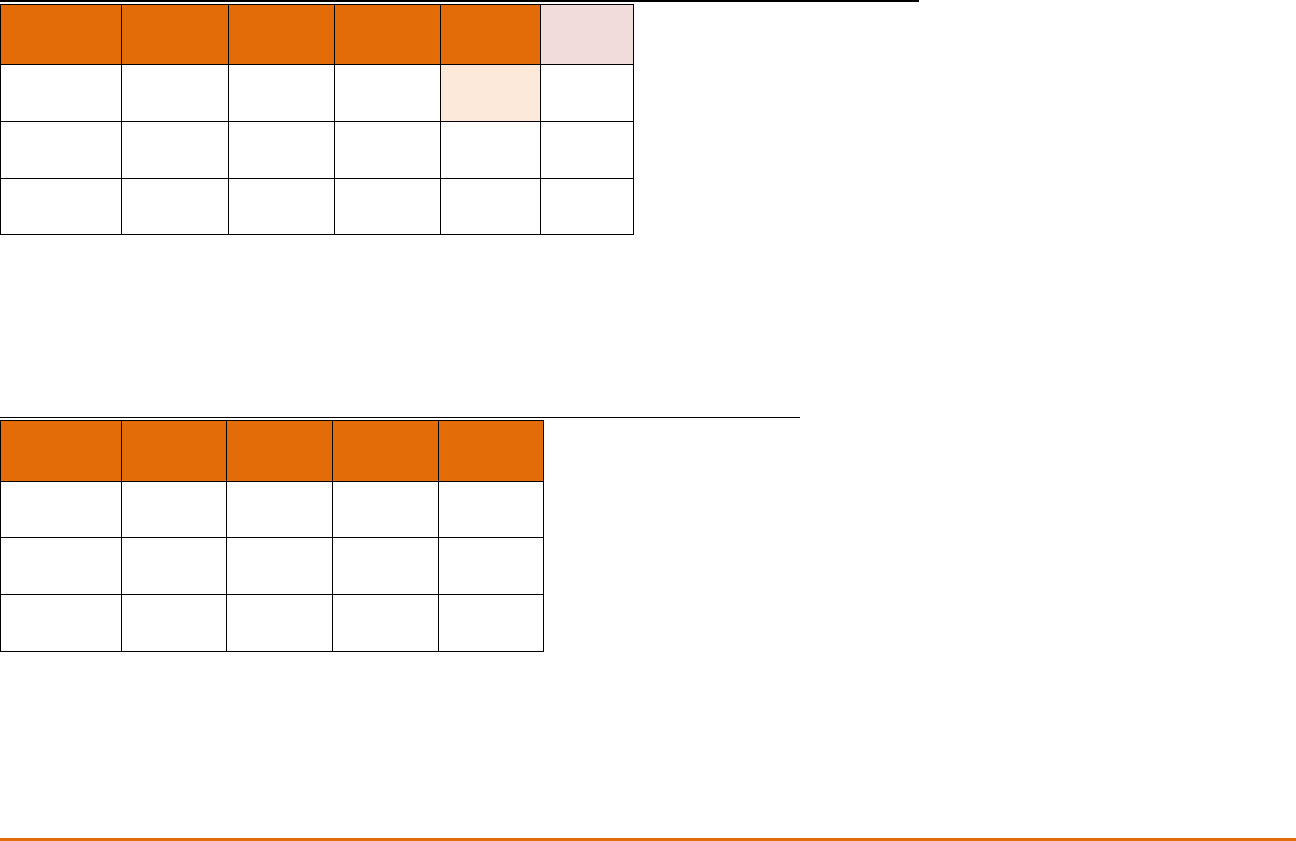
CALIFORNIA TRAFFIC SAFETY SURVEY 2023 DATA ANALYSIS 21
Recall of “Don’t Let Drunk, or ‘High’ Drive” Campaign (Q8c) by Region
The third safety campaign “Don’t Let Drunk, or ‘High’ Drive”, introduced as a survey item in 2022, was recalled by 49.4% of respondents, with a
comparable distribution among the California regions (Table Q8c) and a significant increase of 4.9% since 2022 (p<0.01).
Table Q8c. “In the past 6 months, do you recall: “Don’t Let Drunk, or ‘High’ Drive” by region and year
Q8c by
region
Northern
California
Central
California
Southern
California
Total
2023
Total
2022
Yes
363
173
705
1,241
1,122
47.5%
50.9%
50.1%
49.4%
44.5%
No
402
167
703
1,272
1,401
52.5%
49.1%
49.9%
50.6%
55.5%
Total
765
340
1,408
2,513
2,523
100.0%
100.0%
100.0%
100.0%
100.0%
Recall of “Get Off Your Apps” Campaign (Q8d) by Region
One new safety campaign “Get Off Your Apps” was added as a survey item in 2023, which was recalled by 16.9% of respondents, with a
comparable distribution among the California regions (Table Q8d).
Table Q8d. “In the past 6 months, do you recall: “Get Off Your Apps” by region and year
Q8d by
region
Northern
California
Central
California
Southern
California
Total
2023
Yes
131
61
242
434
16.5%
17.6%
17.0%
16.9%
No
661
286
1,181
2,128
83.5%
82.4%
83.0%
83.1%
Total
792
347
1,423
2,562
100.0%
100.0%
100.0%
100.0%
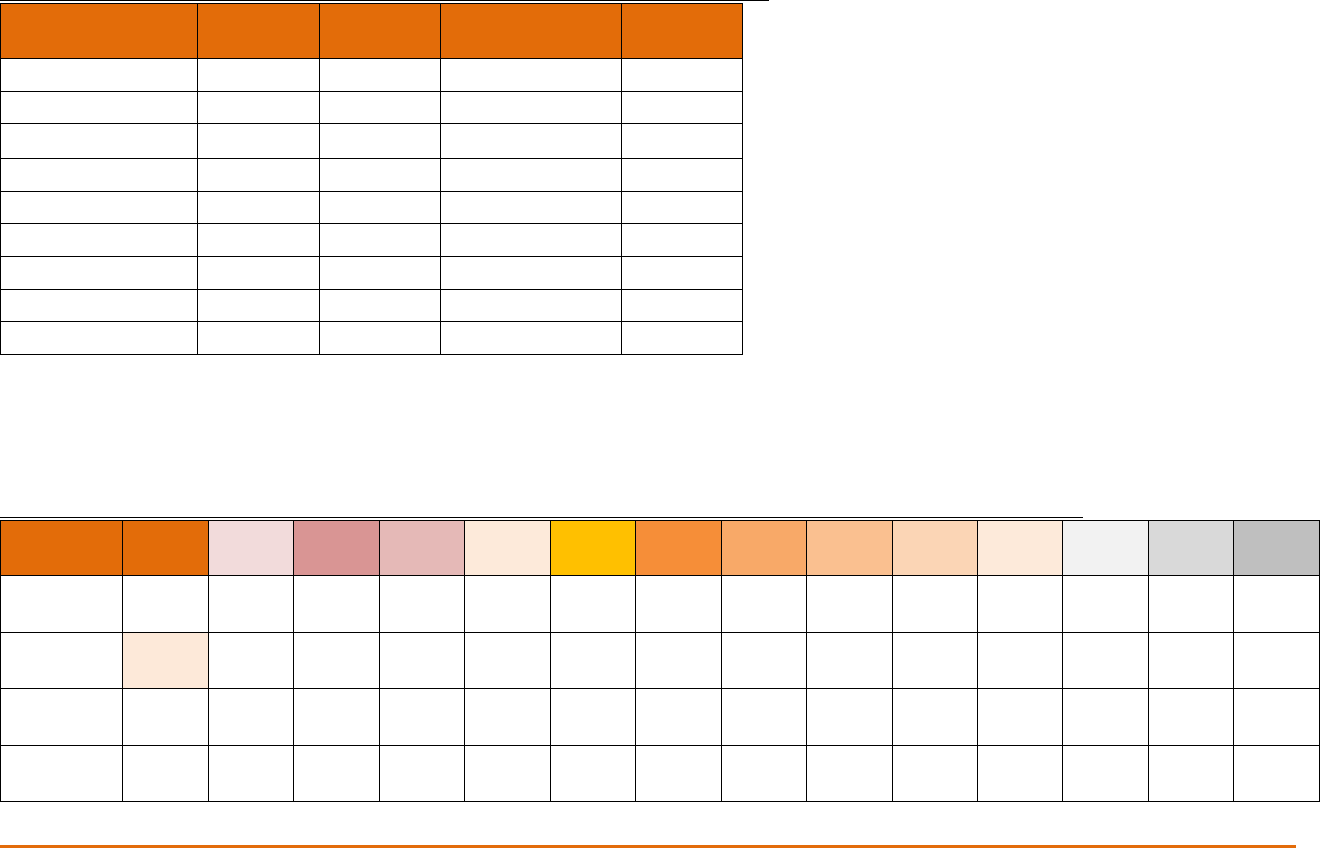
CALIFORNIA TRAFFIC SAFETY SURVEY 2023 DATA ANALYSIS 22
Source of Recall of Safety Campaigns
Respondents who recalled seeing or hearing a safety campaign, were then asked about the source of their recall. Table Q8a-d below outlines the
responses, with Roadside Billboard being the most cited source for all the safety campaigns.
Table Q8a-d Follow-Up: “Where did you See or Hear…?” respective campaign source
Q8a-d
Go Safely
California
Slow the
Fast Down
Don’t Let Drunk,
or ‘High’ Drive
Get Off
Your Apps
Roadside billboard
26.9%
28.2%
39.6%
19.9%
TV
17.5%
13.2%
17.0%
14.4%
Facebook
14.6%
16.5%
10.6%
18.5%
Instagram
11.9%
13.9%
8.2%
15.6%
Radio
10.4%
7.9%
8.9%
7.9%
Twitter
9.8%
10.9%
6.9%
13.0%
Web
8.1%
9.0%
7.3%
10.0%
Other
0.7%
0.3%
1.5%
0.9%
Total
100.0%
100.0%
100.0%
100.0%
Intoxicated Driving (Q9) by Wave
All respondents were asked whether they had driven when they thought they had too much alcohol to drive safely in the past six months.
Almost two-thirds (64.6%) did not, a significant 4.4% decrease from 2022 (p<0.05, Table Q9_1).
Table Q9_1. “In the past 6 months, did you drive when you thought you had too much alcohol to drive safely?” by year
Q9 by year
Total
2023
Total
2022
Total
2021
Total
2020
Total
2019
Total
2018
Total
2017
Total
2016
Total
2015
Total
2014
Total
2013
Total
2012
Total
2011
Total
2010
Yes
229
197
256
223
95
88
137
83
138
162
119
102
120
99
8.3%
7.2%
9.2%
7.8%
7.3%
6.3%
10.1%
6.6%
7.2%
8.8%
6.2%
5.5%
6.7%
6.0%
No
1,778
1,897
1,846
1,945
766
980
918
816
1,264
1,258
1,452
1,263
1,267
1,214
64.6%
69.0%
66.4%
68.2%
59.2%
70.5%
67.4%
64.5%
65.6%
68.3%
75.3%
68.6%
70.7%
73.5%
I do not
drink at all
746
654
678
685
433
322
307
367
525
422
358
475
405
338
27.1%
23.8%
24.4%
24.0%
33.5%
23.2%
22.5%
29.0%
27.2%
22.9%
18.6%
25.8%
22.6%
20.5%
Total
2,754
2,748
2,781
2,853
1,294
1,390
1,362
1,266
1,927
1,842
1,929
1,840
1,792
1,671
100.0%
100.0%
100.0%
100.0%
100.0%
100.0%
100.0%
100.0%
100.0%
100.0%
100.0%
100.0%
100.0%
100.0%
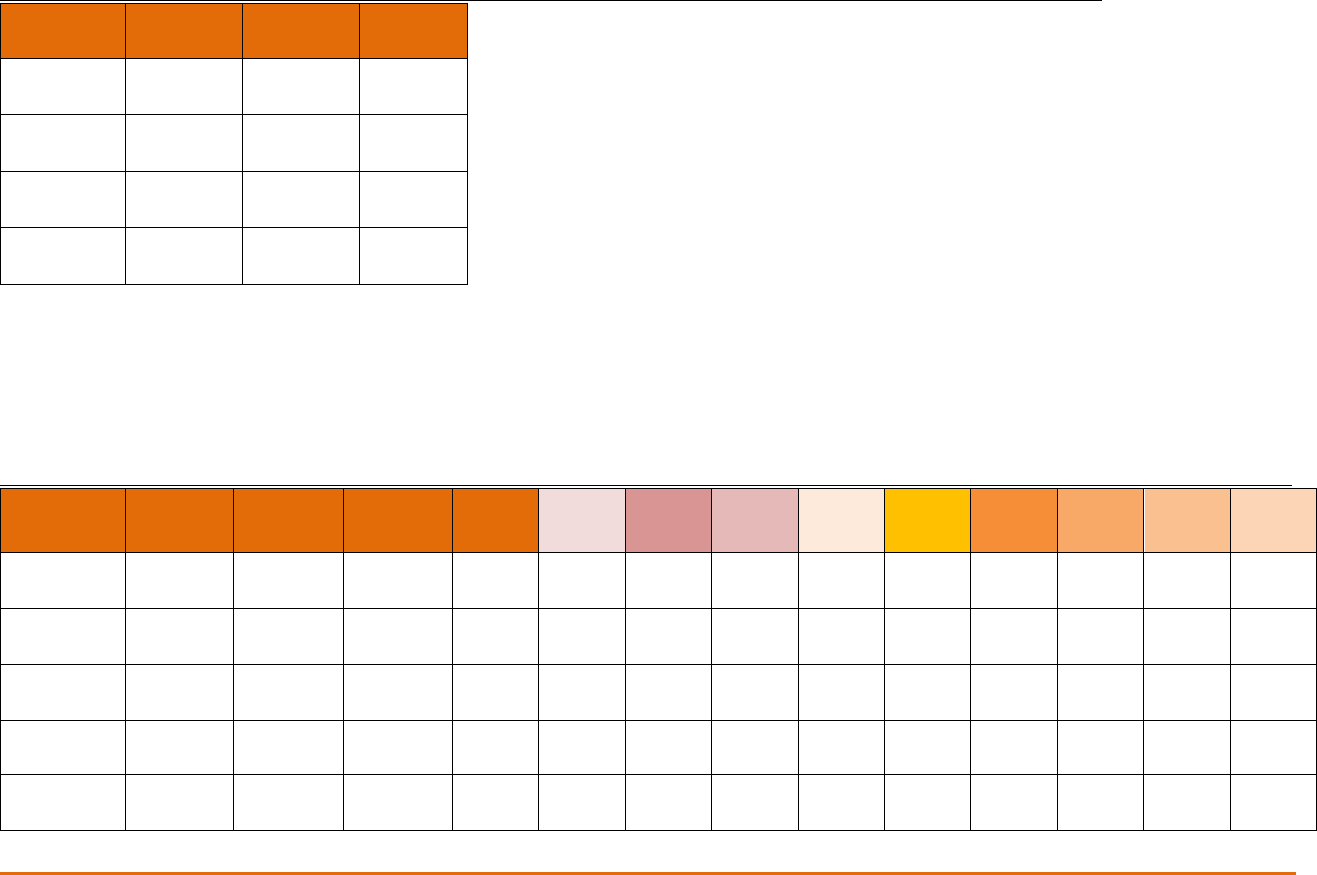
CALIFORNIA TRAFFIC SAFETY SURVEY 2023 DATA ANALYSIS 23
Intoxicated Driving (Q9) by Region
The distribution of instances of intoxicated driving by California region are outlined in Table Q9_2.
Table Q9_2. “In the past 6 months, did you drive when you thought you had too much alcohol to drive safely?” by region
Q9 by
region
Northern
California
Central
California
Southern
California
Yes
59
35
135
7.0%
9.2%
8.8%
No
546
233
999
65.0%
61.3%
65.2%
I do not
drink at all
235
112
398
28.0%
29.5%
26.0%
Total
840
380
1,532
100.0%
100.0%
100.0%
Use of Alternative Ride Services When Drinking (Q10) by Region and Wave
The respondents who do not drink at all skipped over the follow-up that asked about using an alternate transportation ride (e.g., taxi, rideshare,
ride app, etc.) when drinking with others or alone. A total of 47.2% of reported they “Always” or “Sometimes” use alternate transportation,
while 52.8% respondents reported to rarely or never use alternate transportation when drinking with others or alone (Table Q10).
Table Q10. “In the past 6 months, how often have you used alternate transportation when drinking with others or alone?” by region and year
Q10 by
region
Northern
California
Central
California
Southern
California
Total
2023
Total
2022
Total
2021
Total
2020
Total
2019
Total
2018
Total
2017
Total
2016
Total
2015
Total
2014
Always
170
61
276
507
534
394
457
316
330
278
187
319
150
28.0%
23.0%
24.6%
25.4%
25.6%
18.8%
21.2%
37.1%
31.2%
26.4%
20.8%
22.9%
10.6%
Sometimes
121
60
255
436
368
351
389
217
240
188
162
177
179
19.9%
22.6%
22.7%
21.8%
17.7%
16.8%
18.1%
25.5%
22.7%
17.8%
18.0%
12.7%
12.7%
Rarely
84
47
160
291
276
245
272
88
115
147
111
184
189
13.8%
17.7%
14.2%
14.6%
13.3%
11.7%
12.6%
10.3%
10.9%
13.9%
12.3%
13.2%
13.4%
Never
232
97
433
762
905
1,104
1,036
230
372
442
439
710
894
38.2%
36.6%
38.5%
38.2%
43.4%
52.7%
48.1%
27.0%
35.2%
41.9%
48.8%
51.1%
63.3%
Total
607
265
1,124
1,996
2,083
2,094
2,154
851
1,057
1,055
899
1,390
1,412
100.0%
100.0%
100.0%
100.0%
100.0%
100.0%
100.0%
100.0%
100.0%
100.0%
100.0%
100.0%
100.0%
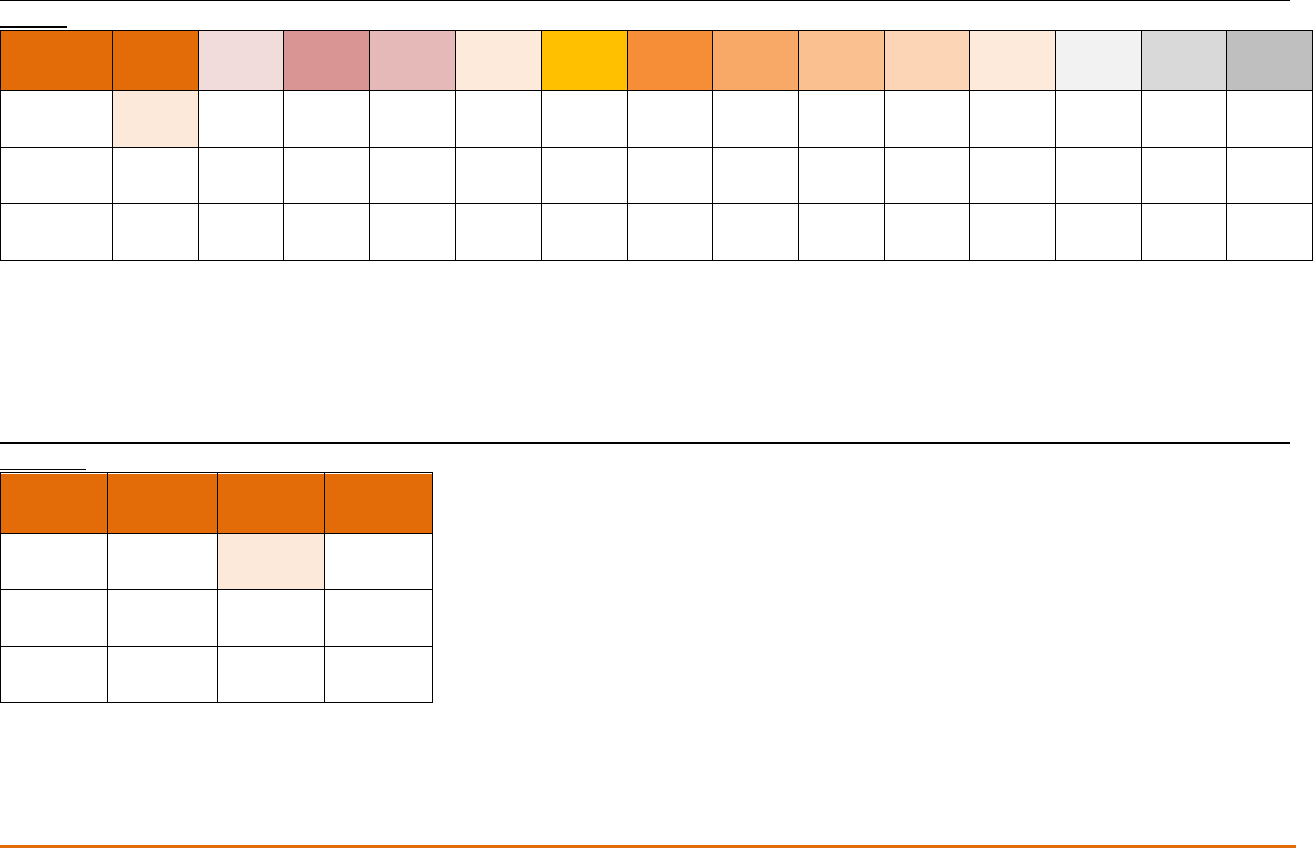
CALIFORNIA TRAFFIC SAFETY SURVEY 2023 DATA ANALYSIS 24
Recall of Sobriety/DUI Checkpoints in Past 6 Months (Q11) by Wave
More than half (56.4%) of the respondents reported to have seen or heard about police setting up sobriety/DUI checkpoints in the past six
months (Table Q11_1), a 4.2% significant increase since 2022 is significant (p<0.05).
Table Q11_1. “In the past 6 months, have you seen/heard anything about police setting up sobriety/DUI checkpoints to catch drunk drivers?”
by year
Q11
by year
Total
2023
Total
2022
Total
2021
Total
2020
Total
2019
Total
2018
Total
2017
Total
2016
Total
2015
Total
2014
Total
2013
Total
2012
Total
2011
Total
2010
Yes
1,390
1,277
1,234
1,415
489
593
706
735
1,094
1,327
993
1,263
1,300
1,006
56.4%
52.1%
51.0%
55.5%
40.1%
45.7%
52.9%
57.9%
56.8%
71.3%
51.6%
67.8%
72.9%
60.6%
No
1,077
1,173
1,187
1,135
730
704
629
535
831
535
931
599
483
653
43.6%
47.9%
49.0%
44.5%
59.9%
54.3%
47.1%
42.1%
43.2%
28.7%
48.4%
32.2%
27.1%
39.4%
Total
2,467
2,450
2,421
2,550
1,219
1,297
1,335
1,270
1,925
1,862
1,924
1,862
1,783
1,659
100.0%
100.0%
100.0%
100.0%
100.0%
100.0%
100.0%
100.0%
100.0%
100.0%
100.0%
100.0%
100.0%
100.0%
Recall of Sobriety/DUI Checkpoints in Past 6 Months (Q11) by Region
The recall of sobriety/DUI checkpoints by California region is presented in Table Q11_2. The regional distribution shows a significantly higher
recall by Central California drivers (p<0.05).
Table Q11_2. “In the past 6 months, have you seen/heard anything about police setting up sobriety/DUI checkpoints to catch drunk drivers?”
by region
Q11 by
region
Northern
California
Central
California
Southern
California
Yes
406
225
760
54.2%
65.6%
55.3%
No
343
118
615
45.8%
34.4%
44.7%
Total
749
343
1,375
100.0%
100.0%
100.0%
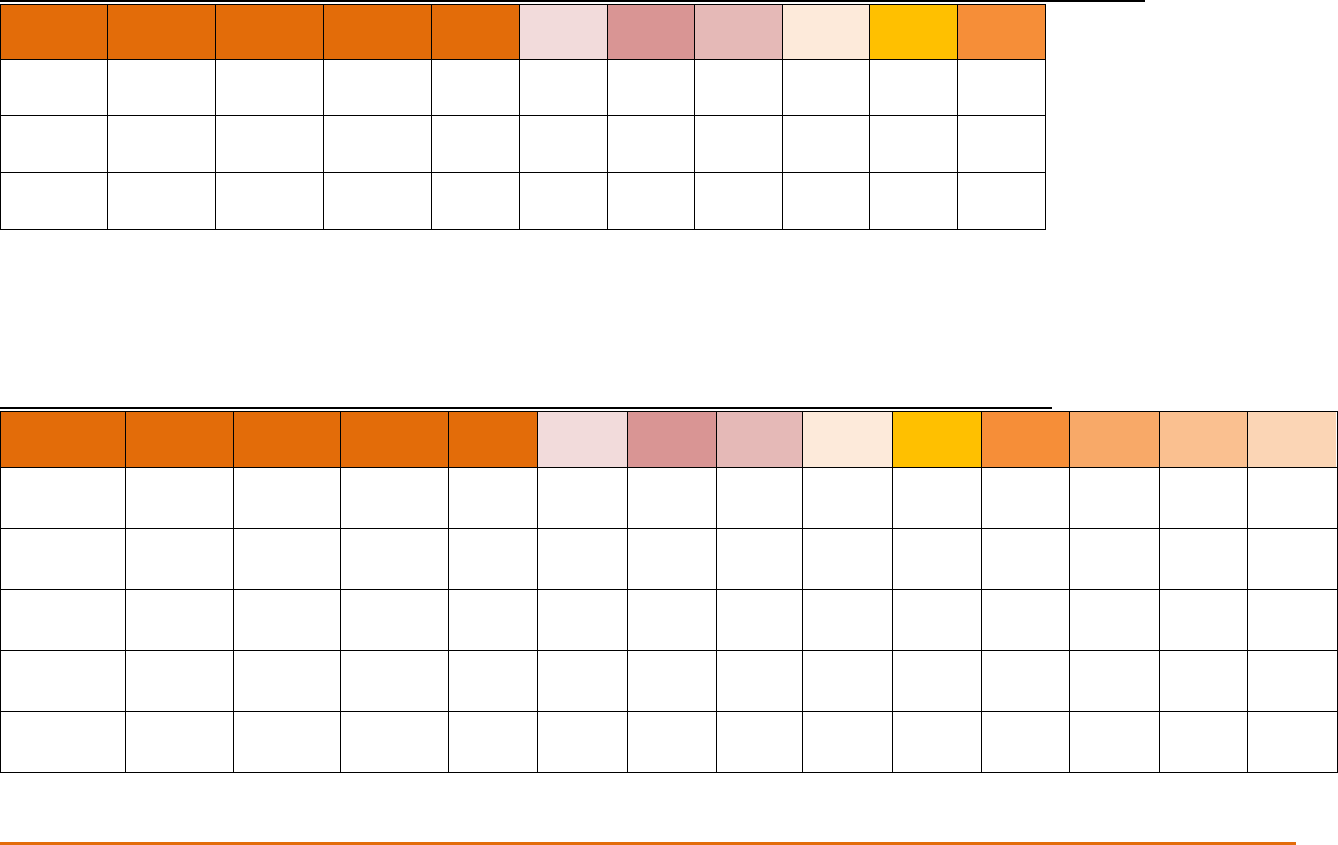
CALIFORNIA TRAFFIC SAFETY SURVEY 2023 DATA ANALYSIS 25
Awareness of DUI (Q12) by Region and Wave
The majority of California drivers (91.2%) across all regions reported to be aware of getting a DUI for driving under the influence of legal or illegal
drugs (Table Q12). This finding is consistent with previous years’ data.
Table Q12. “Did you know that you can get a DUI if you drive under the influence of legal or illegal drugs?” by region and year
Q12 by
region
Northern
California
Central
California
Southern
California
Total
2023
Total
2022
Total
2021
Total
2020
Total
2019
Total
2018
Total
2017
Yes
778
343
1,389
2,510
2,464
2,449
2,572
1,132
1,263
1,209
92.2%
90.3%
90.9%
91.2%
89.9%
88.5%
90.3%
90.0%
93.8%
91.2%
No
66
37
139
242
278
317
275
126
83
116
7.8%
9.7%
9.1%
8.8%
10.1%
11.5%
9.7%
10.0%
6.2%
8.8%
Total
844
380
1,528
2,752
2,742
2,766
2,847
1,258
1,346
1,325
100.0%
100.0%
100.0%
100.0%
100.0%
100.0%
100.0%
100.0%
100.0%
100.0%
Likelihood of Getting Arrested for Driving Impaired (Q13) by Region and Wave
The perception of the likelihood of getting ticketed for driving impaired show a similar distribution in 2023 as compared to 2022 (Table Q13).
Overall, 79.3% respondents believed it to be “Very Likely” or “Somewhat Likely” to get arrested for driving impaired.
Table Q13. “In your opinion, how likely is it for someone to get arrested if they drive impaired?” by region and year
Q13 by
region
Northern
California
Central
California
Southern
California
Total
2023
Total
2022
Total
2021
Total
2020
Total
2019
Total
2018
Total
2017
Total
2016
Total
2015
Total
2014
Very Likely
291
154
573
1,018
1,017
1,003
1,099
571
569
519
519
643
808
34.8%
40.8%
37.7%
37.7%
37.2%
36.3%
38.6%
45.4%
42.5%
38.7%
41.3%
34.7%
44.5%
Somewhat
Likely
360
149
629
1,138
1,117
1,175
1,177
394
454
446
377
625
515
43.1%
39.5%
41.4%
41.6%
40.9%
42.5%
41.4%
31.3%
33.9%
33.2%
30.0%
33.7%
28.4%
Somewhat
Unlikely
142
58
247
447
462
462
299
213
206
243
264
373
316
17.0%
15.4%
16.2%
16.4%
16.9%
16.7%
14.0%
16.9%
15.4%
18.1%
21.0%
20.1%
17.4%
Very
Unlikely
43
16
71
130
135
125
171
81
109
134
97
214
175
5.1%
4.2%
4.7%
4.8%
4.9%
4.5%
6.0%
6.4%
8.1%
10.0%
7.7%
11.5%
9.6%
Total
836
377
1,520
2,733
2,731
2,765
2,846
1,259
1,338
1,342
1,257
1,855
1,814
100.0%
100.0%
100.0%
100.0%
100.0%
100.0%
100.0%
100.0%
100.0%
100.0%
100.0%
100.0%
100.0%
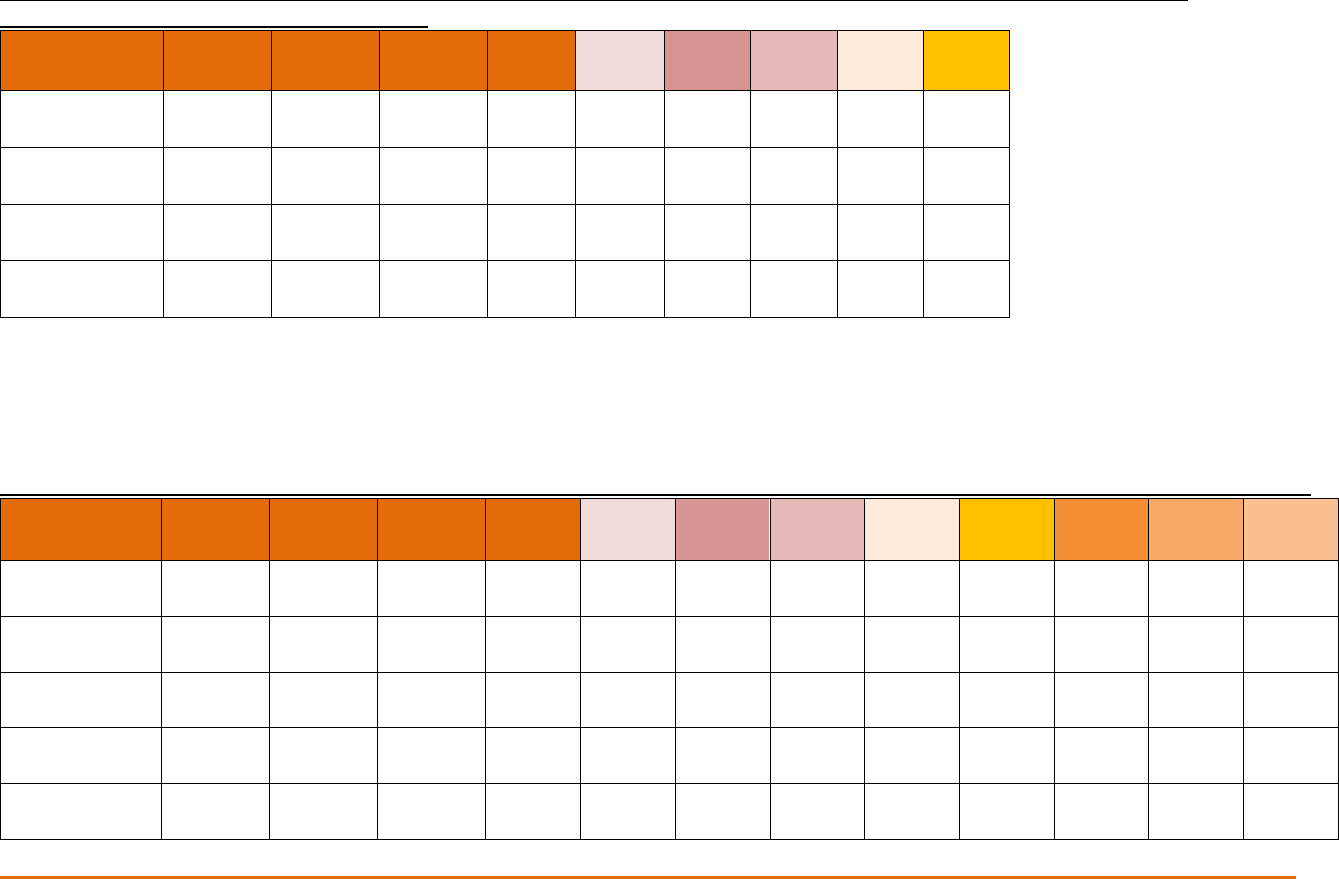
CALIFORNIA TRAFFIC SAFETY SURVEY 2023 DATA ANALYSIS 26
Perception of Marijuana Impairing Driving Functions (Q14) by Region and Wave
Table Q14 shows the perception of marijuana use impairing driving, with results similar to previous waves of data collection.
Table Q14. “Do you think marijuana can impair driving related functions, such as reaction time, distance perception, lane tracking,
coordination and balance?” by region and year
Q14 by region
Northern
California
Central
California
Southern
California
Total
2023
Total
2022
Total
2021
Total
2020
Total
2019
Total
2018
Yes
660
279
1,196
2,135
2,091
2,138
2,271
1,019
1,048
78.1%
74.0%
78.5%
77.8%
76.3%
77.0%
80.1%
80.0%
77.3%
No
58
38
127
223
234
237
209
125
98
6.9%
10.1%
8.3%
8.1%
8.5%
8.5%
7.4%
9.8%
7.2%
It Depends
127
60
200
387
416
401
356
130
210
15.0%
15.9%
13.1%
14.1%
15.2%
14.4%
12.6%
10.2%
15.5%
Total
845
377
1,523
2,745
2,741
2,776
2,836
1,274
1,356
100.0%
100.0%
100.0%
100.0%
100.0%
100.0%
100.0%
100.0%
100.0%
Perception of DUI of Drugs, Legal and Illegal (Q15) by Region and Wave
Consistent with the trend from previous waves, over half of all respondents (50.6%) believe that driving under the influence of drugs, including
marijuana, prescription, and illegal, is “A Very Big Problem” (Table Q15). Distribution of responses by regions show no significant difference
between the California regions.
Table Q15. “How serious of a problem is driving under the influence of drugs: including marijuana, prescription, and illegal?” by region and year
Q15 by region
Northern
California
Central
California
Southern
California
Total
2023
Total
2022
Total
2021
Total
2020
Total
2019
Total
2018
Total
2017
Total
2016
Total
2015
A Very Big
Problem
415
200
773
1,388
1,365
1,437
1,486
617
664
715
717
980
49.2%
53.6%
50.7%
50.6%
50.0%
51.9%
52.3%
49.6%
49.3%
53.5%
58.1%
54.7%
Somewhat of a
Problem
335
133
558
1,026
1,033
1,030
1,006
353
494
461
381
571
39.7%
35.7%
36.6%
37.4%
37.8%
37.2%
35.4%
28.4%
36.7%
34.5%
30.9%
31.9%
A Small
Problem
77
32
172
281
291
259
287
237
140
122
113
193
9.1%
8.6%
11.3%
10.2%
10.7%
9.4%
10.1%
19.1%
10.4%
9.1%
9.1%
10.8%
Not a Problem
at all
17
8
22
47
43
42
63
37
48
39
24
48
2.0%
2.1%
1.4%
1.7%
1.6%
1.5%
2.2%
3.0%
3.6%
2.9%
1.9%
2.7%
Total
844
373
1,525
2,742
2,732
2,768
2,842
1,244
1,346
1,337
1,235
1,792
100.0%
100.0%
100.0%
100.0%
100.0%
100.0%
100.0%
100.0%
100.0%
100.0%
100.0%
100.0%
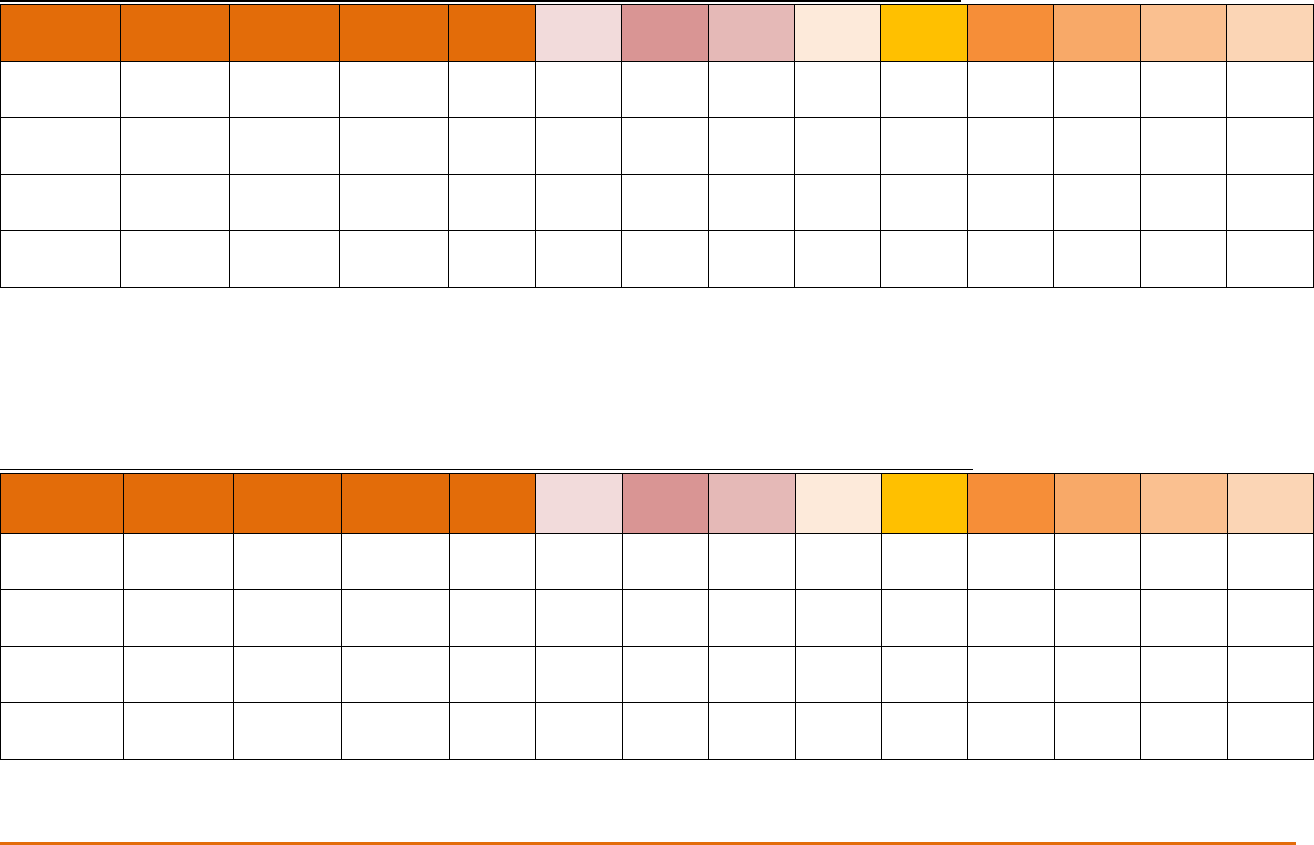
CALIFORNIA TRAFFIC SAFETY SURVEY 2023 DATA ANALYSIS 27
Safety of Driving 10 Miles Over the Speed Limit on Freeways (Q16) by Region and Wave
There are no significant differences between the California regions on the perception of whether it is safe to drive 10 miles over the speed limit
on freeways (Table Q16). The overall distribution of responses between the waves shows no significant differences either.
Table Q16. “Do you think it’s safe to drive 10 miles over the speed limit on freeways?” by region and year
Q16 by
region
Northern
California
Central
California
Southern
California
Total
2023
Total
2022
Total
2021
Total
2020
Total
2019
Total
2018
Total
2017
Total
2016
Total
2015
Total
2014
Yes
251
119
523
893
913
908
1,023
764
788
879
755
1,110
1,104
30.0%
31.6%
34.5%
32.7%
33.3%
32.8%
35.9%
59.5%
56.9%
65.0%
59.5%
57.5%
59.3%
No
235
109
388
732
715
788
742
337
266
253
275
481
449
28.0%
29.0%
25.6%
26.8%
26.1%
28.5%
26.0%
26.2%
19.2%
18.7%
21.7%
24.9%
24.1%
It Depends
352
148
605
1,105
1,115
1,072
1,087
183
332
220
238
341
309
42.0%
39.4%
39.9%
40.5%
40.6%
38.7%
38.1%
14.3%
24.0%
16.3%
18.8%
17.7%
16.6%
Total
838
376
1,516
2,730
2,743
2,768
2,852
1,284
1,386
1,352
1,268
1,932
1,862
100.0%
100.0%
100.0%
100.0%
100.0%
100.0%
100.0%
100.0%
100.0%
100.0%
100.0%
100.0%
100.0%
Safety of Driving Over the Speed Limit on Residential Streets (Q17) by Region and Wave
Asked whether it is safe to drive above the speed limit on residential streets, 76.7% respondents disagreed. The distribution among California
regions shows no significant differences and no change in perception to previous years (Table Q17).
Table Q17. “Do you think it’s safe to drive over the speed limit on residential streets?” by region and year*
Q17 by
region
Northern
California
Central
California
Southern
California
Total
2023
Total
2022
Total
2021
Total
2020
Total
2019
Total
2018
Total
2017
Total
2016
Total
2015
Total
2014
Yes
66
36
145
247
259
652
729
506
460
545
465
750
577
7.8%
9.5%
9.5%
9.0%
9.4%
23.5%
25.6%
39.5%
33.2%
40.3%
36.6%
38.8%
31.0%
No
654
298
1,156
2,108
2,034
1,436
1,476
639
701
598
585
905
978
77.6%
79.0%
75.7%
76.7%
73.9%
51.7%
51.8%
49.8%
50.7%
44.3%
46.1%
46.8%
52.6%
It Depends
123
43
227
393
461
691
643
137
223
208
220
279
306
14.6%
11.4%
14.9%
14.3%
16.7%
24.9%
22.6%
10.7%
16.1%
15.4%
17.3%
14.4%
16.4%
Total
843
377
1,528
2,748
2,754
2,779
2,848
1,282
1,384
1,351
1,270
1,934
1,861
100.0%
100.0%
100.0%
100.0%
100.0%
100.0%
100.0%
100.0%
100.0%
100.0%
100.0%
100.0%
100.0%
*Verbiage changed in 2022. In earlier years, the question was “Do you think it’s safe to drive five miles over the speed limit on residential streets?”
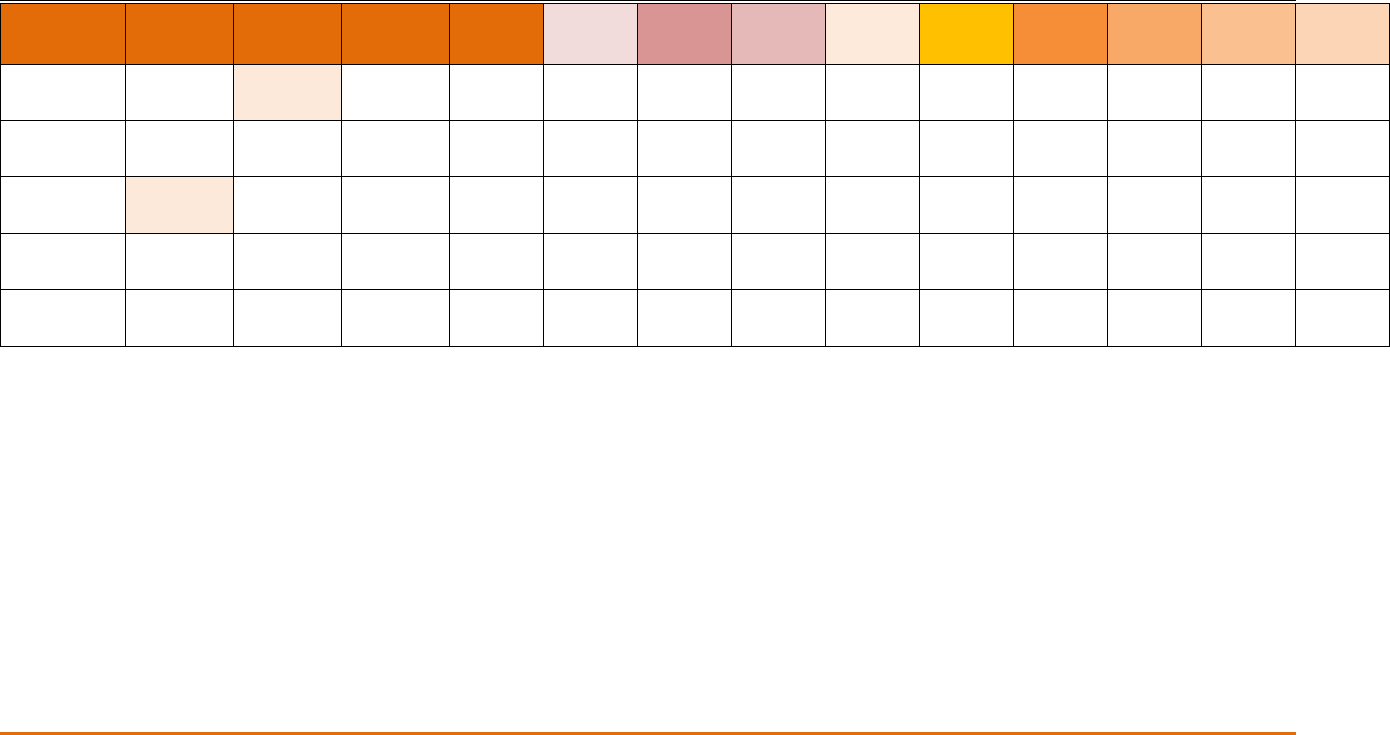
CALIFORNIA TRAFFIC SAFETY SURVEY 2023 DATA ANALYSIS 28
Chance of Being Ticketed for Driving Over Speed Limit on Residential Streets (Q18) by Region
and Wave
Table Q18 shows the overall distribution of response to perceived chances of getting a ticket for driving over the speed limit on residential
streets. A total of 63.7% California drivers believe it to be “Very Likely” or “Somewhat Likely” to get a ticket for driving over the speed limit on
residential streets. A significantly higher percentage of drivers in Central California (30.9%) believe it to be “Very Likely” to get a ticket for driving
over speed limit on residential streets while a significantly higher number of Northern California drivers believe it to be “Somewhat Unlikely”
(p<0.05).
Table Q18. “What do you think the chances are of getting a ticket if you drive over the speed limit on residential streets?” by region and year*
Q18 by
region
Northern
California
Central
California
Southern
California
Total
2023
Total
2022
Total
2021
Total
2020
Total
2019
Total
2018
Total
2017
Total
2016
Total
2015
Total
2014
Very Likely
201
116
387
704
645
645
614
345
267
290
267
398
413
24.0%
30.9%
25.4%
25.7%
23.6%
23.3%
21.6%
27.7%
20.1%
21.6%
21.3%
21.5%
22.5%
Somewhat
Likely
292
144
603
1,039
1,097
1,252
1,315
410
552
484
460
741
691
34.8%
38.3%
39.6%
38.0%
40.1%
45.1%
46.2%
32.9%
41.6%
36.0%
36.7%
40.0%
37.6%
Somewhat
Unlikely
243
82
381
706
667
683
717
354
321
334
341
467
484
29.0%
21.8%
25.0%
25.8%
24.4%
24.6%
25.2%
28.4%
24.2%
24.9%
27.2%
25.2%
26.4%
Very
Unlikely
102
34
152
288
328
194
198
138
186
236
186
245
248
12.2%
9.0%
10.0%
10.5%
12.0%
7.0%
7.0%
11.1%
14.0%
17.6%
14.8%
13.2%
13.5%
Total
838
376
1,523
2,737
2,737
2,774
2,844
1,247
1,326
1,344
1,254
1,851
1,836
100.0%
100.0%
100.0%
100.0%
100.0%
100.0%
100.0%
100.0%
100.0%
100.0%
100.0%
100.0%
100.0%
*In surveys before 2021 this question was not specific to residential streets.

CALIFORNIA TRAFFIC SAFETY SURVEY 2023 DATA ANALYSIS 29
Perception of Components of Safe System Approach (Safe1)
Survey items based on the Safe System Approach that describe ways to increase safety for all road users, were first introduced in 2022, and
continue to be a part of the 2023 survey (Table Safe1). Respondents were asked to rate the importance of five factors on a scale of 1 to 5, with 1
being “Not Important” and 5 being “Very Important”, to increase safety for all road users. The majority of the respondents rated all five factors
to be “Very Important” to increase safety for all road users, with “Improve safe streets design to design roads that support all road users,
including drivers, pedestrian, bicyclists and transit” being the highest rated factor of all in 2023 (48.7%).
Table Safe1. Rate the importance of the following factors to increase safety for all road users
Safe1 Statements
1-Not
Important
2
3
4
5-Very
Important
2022 1-Not
Important
2022 5-Very
Important
Promote safe speeds and reduce driver speeds to reduce injury
severity for all road users
88
161
561
791
1,176
79
1,378
3.2%
5.8%
20.2%
28.5%
42.3%
2.9%
50.7%
Improve safe streets design to design roads that support all road
users, including drivers, pedestrian, bicyclists and transit
78
142
463
742
1,353
45
1,551
2.8%
5.1%
16.7%
26.7%
48.7%
1.7%
57.0%
Expand awareness of safe walking, biking, and rolling
83
171
549
806
1,169
72
1,323
3.0%
6.1%
19.8%
29.0%
42.1%
2.6%
48.7%
Provide physical and emotional care to crash survivors and their
families
135
197
678
719
1,048
88
1,254
4.9%
7.1%
24.4%
25.9%
37.7%
3.2%
46.2%
Support communities to plan for safe streets and public areas
78
165
538
904
1,093
64
1,312
2.8%
5.9%
19.4%
32.6%
39.3%
2.3%
48.3%

CALIFORNIA TRAFFIC SAFETY SURVEY 2023 DATA ANALYSIS 30
Most Important Factor Resulting in Traffic Injuries/Fatalities (Safe2) by Region
Another Safe System Approach based question, introduced in 2022, asked the respondents’ opinion about the most important factor resulting in
traffic injuries/fatalities. Table Safe2 shows the response distribution by California region as well as a comparison with the 2022 data. There is no
significant difference between California regions, as well as compared to the 2022 responses. “Driver behavior” was reported to be the most
important factor by more than half of California drivers (54.1%), following by “Speeding vehicles” which was mentioned by about a quarter of
respondents (25.4%).
Table Safe2. “In your opinion, what is the most important factor resulting in traffic injuries/fatalities?” by region
Safe2 by Region
Northern
California
Central
California
Southern
California
Total
2023
Total
2022
Driver behavior
459
209
814
1,482
1,446
54.4%
55.4%
53.6%
54.1%
52.9%
Speeding vehicles
201
91
405
697
723
23.8%
24.1%
26.7%
25.4%
26.4%
Lack of enforcement
65
32
110
207
212
7.7%
8.5%
7.2%
7.6%
7.8%
Roadway conditions
44
21
76
141
156
5.2%
5.6%
5.0%
5.1%
5.7%
Lack of sidewalks/bike
lanes/crossing opportunities
34
9
49
92
96
4.0%
2.4%
3.2%
3.4%
3.5%
Lack of speed limit/road signages
26
14
49
89
90
3.1%
3.7%
3.2%
3.2%
3.3%
Other (Uncoded)
14
1
16
31
12
1.7%
0.3%
1.1%
1.1%
0.4%
Total
843
377
1,519
2,739
2,735
100.0%
100.0%
100.0%
100.0%
100.0%
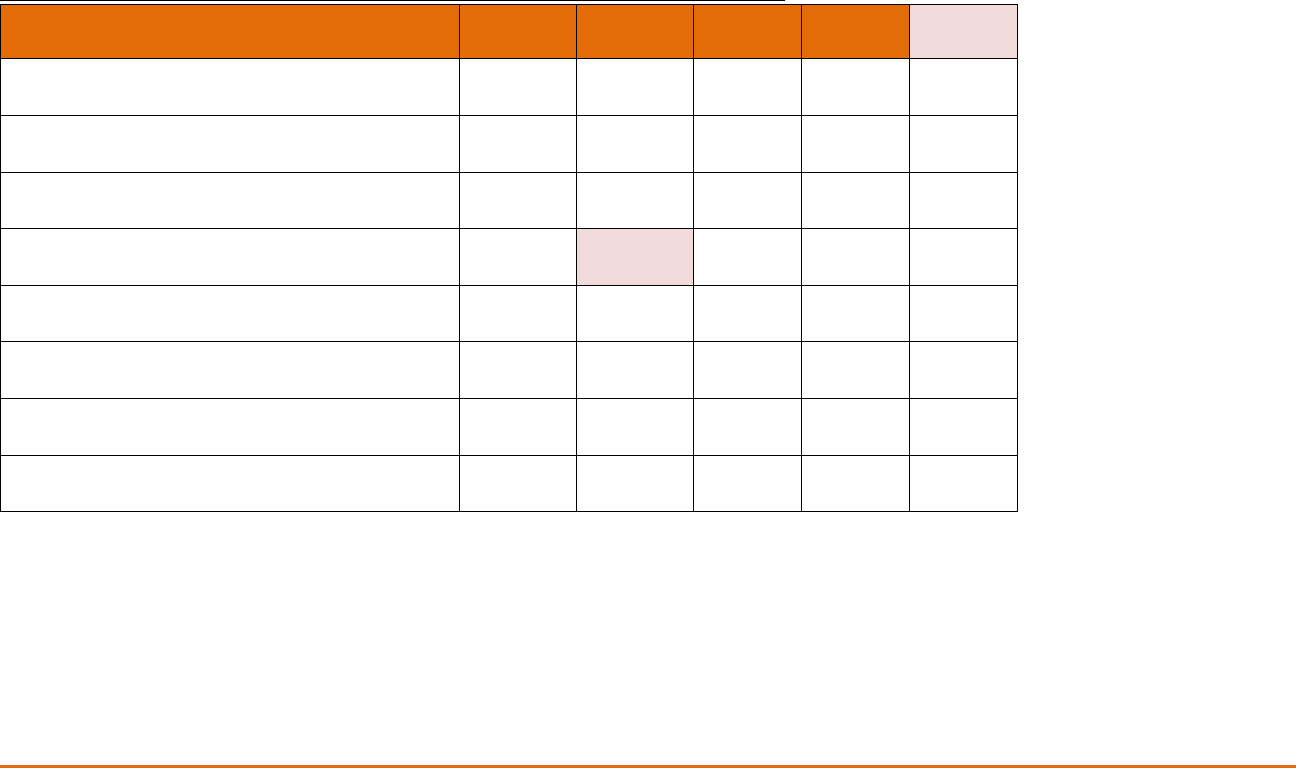
CALIFORNIA TRAFFIC SAFETY SURVEY 2023 DATA ANALYSIS 31
Main Form of Transportation (Q19) by Region
Another survey question, introduced in 2022, asked respondents about their main form of transportation in a typical week, with a single-choice
answer. A majority of California drivers reported driving as their typical mode of transport (79.8%), with drivers in Southern California reporting
a slightly higher percentage of mostly driving as compared to Northern and Central California (77.1% and 80.5%, respectively). A statistically
significant difference was the higher number of respondents “Mostly Ride a Motorcycle/Scooter” in Central California compared to the other
two regions (p<0.05, Table Q19_1).
Table Q19_1. “In a typical week, what is your main form of transportation?” by region
Q19 by region
Northern
California
Central
California
Southern
California
Total
2023
Total
2022
Mostly Drive
647
306
1,238
2,191
2,252
77.1%
80.5%
81.1%
79.8%
82.3%
Mostly Walk
68
19
129
216
207
8.1%
5.0%
8.5%
7.9%
7.6%
Mostly Ride a Bike
29
15
46
90
79
3.5%
3.9%
3.0%
3.3%
2.9%
Mostly Ride a Motorcycle/Scooter
15
16
29
60
44
1.8%
4.2%
1.9%
2.2%
1.6%
Mostly take Public Transit
46
13
52
111
95
5.5%
3.4%
3.4%
4.0%
3.5%
Mostly use Ride Share Services/Taxis/Ride as
passenger
32
10
25
63
56
3.8%
2.6%
1.6%
2.3%
2.0%
Other
2
1
7
14
4
0.2%
0.3%
0.5%
0.5%
0.1%
Total
839
380
1,526
2,745
2,737
100.0%
100.0%
100.0%
100.0%
100.0%
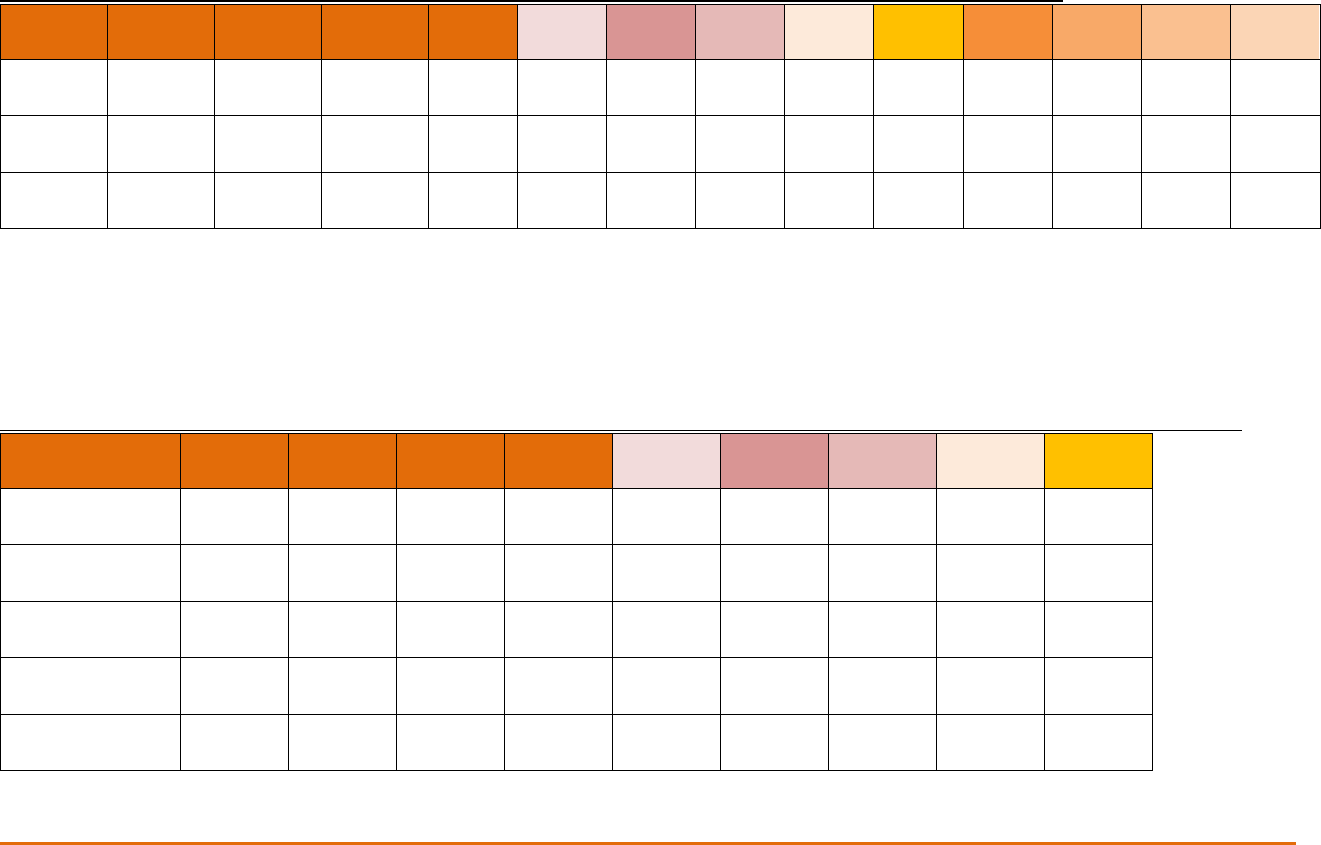
CALIFORNIA TRAFFIC SAFETY SURVEY 2023 DATA ANALYSIS 32
Perception of Legality for Bicyclists on Roadways (Q20) by Region and Wave
When asked whether they believe it to be legal for bicyclists to ride on roadways when there is no bike lake, more than two thirds of the
respondents (68.0%) confirmed this (Table Q20), similar to the 2022 findings.
Table Q20. “Do you think it is legal for bicyclists to ride on roadways when there is no bike lane?” by region and year
Q20 by
region
Northern
California
Central
California
Southern
California
Total
2023
Total
2022
Total
2021
Total
2020
Total
2019
Total
2018
Total
2017
Total
2016
Total
2015
Total
2014
Yes
589
235
995
1,819
1,824
1,698
1,764
993
984
956
838
1,260
1,204
71.5%
64.2%
67.0%
68.0%
68.2%
62.2%
63.0%
80.2%
73.8%
72.2%
68.0%
68.6%
68.7%
No
235
131
490
856
852
1,034
1,038
245
349
369
395
577
549
28.5%
35.8%
33.0%
32.0%
31.8%
37.8%
37.0%
19.8%
26.2%
27.8%
32.0%
31.4%
31.3%
Total
824
366
1,485
2,675
2,676
2,732
2,802
1,238
1,333
1,325
1,233
1,837
1,753
100.0%
100.0%
100.0%
100.0%
100.0%
100.0%
100.0%
100.0%
100.0%
100.0%
100.0%
100.0%
100.0%
Level of Comfort Sharing Road with Bicyclists with Bike Lanes (Q21) by Region and Wave
Table Q21 describes the responses to the level of comfort with sharing the road with bicyclists when there is a bike lane. Overall, a total of 64.2%
of California drivers stated they are “Very Comfortable” or “Somewhat Comfortable” sharing the road with bicyclists, with a similar distribution
among regions, as well as compared to previous waves.
Table Q21. “When driving, how comfortable are you with sharing the road with bicyclists when there IS a bike lane?” by region and year
Q21 by region
Northern
California
Central
California
Southern
California
Total
2023
Total
2022
Total
2021
Total
2020
Total
2019
Total
2018
Very Comfortable
234
111
436
781
818
986
1,034
570
634
27.9%
29.4%
28.7%
28.6%
29.8%
35.7%
36.2%
45.1%
46.3%
Somewhat
Comfortable
304
126
544
974
972
1,004
1,045
395
369
36.2%
33.3%
35.8%
35.6%
35.4%
36.3%
36.6%
31.3%
27.0%
Somewhat
Uncomfortable
200
90
341
631
615
529
506
171
205
23.8%
23.8%
22.5%
23.1%
22.4%
19.1%
17.7%
13.5%
15.0%
Very
Uncomfortable
101
51
197
349
337
246
269
127
160
12.0%
13.5%
13.0%
12.8%
12.3%
8.9%
9.4%
10.1%
11.7%
Total
839
378
1,518
2,735
2,742
2,765
2,854
1,263
1,368
100.0%
100.0%
100.0%
100.0%
100.0%
100.0%
100.0%
100.0%
100.0%

CALIFORNIA TRAFFIC SAFETY SURVEY 2023 DATA ANALYSIS 33
Level of Comfort Sharing Road with Bicyclists when Driving (Q22) by Region
Another survey item that was added in 2022, and continued in 2023, asked about specific situations when the respondent would feel most
comfortable sharing the road with bicyclists when driving. The respondent could only choose one answer. The distribution of responses across
the California regions as well as comparison to 2022 data are shown in Table Q22. More than half of the respondents (54.5%) reported to be
most comfortable “When there is a protected bike lane divider”, with a similar distribution between California regions. The response pattern is
also very similar to 2022, with no significant differences between the years.
Table Q22. “In what situation would you feel most comfortable sharing the road with bicyclists when driving?” by region
Q22 by region
Northern
California
Central
California
Southern
California
Total
2023
Total
2022
When there is a protected bike lane divider
452
192
839
1,483
1,538
53.7%
52.0%
55.5%
54.5%
56.4%
Where there is a bike lane with painted dividers
279
129
478
886
857
33.2%
35.0%
31.6%
32.6%
31.4%
Where there is no bike lane at all
50
23
84
157
137
5.9%
6.2%
5.6%
5.8%
5.0%
Other
5
3
9
17
19
0.6%
0.8%
0.6%
0.6%
0.7%
I don’t feel comfortable sharing the road with
bicyclists under any circumstance
55
22
101
178
176
6.5%
6.0%
6.7%
6.5%
6.5%
Total
841
369
1,511
2,721
2,727
100.0%
100.0%
100.0%
100.0%
100.0%
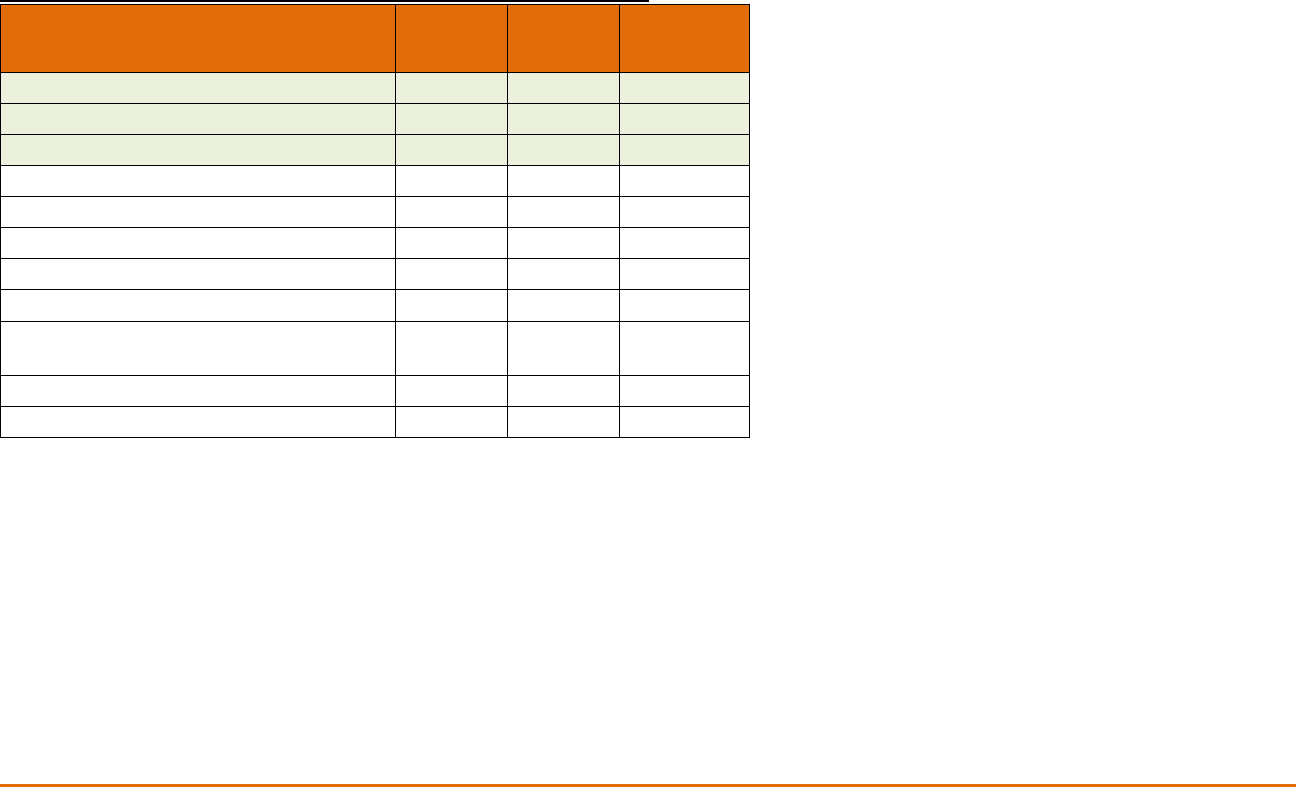
CALIFORNIA TRAFFIC SAFETY SURVEY 2023 DATA ANALYSIS 34
Safety Problems Experienced as Pedestrian or Bicyclist (Q23)
Safety problems experienced as a pedestrian or bicyclist in the last six months was asked as a multiple-choice question. The responses are
outlined in Table Q23_1, in order of most frequently reported responses. Consistent with previous years, “Cars going too fast” remains the most
frequently stated responses, with more than half of the drivers (57.1%) mentioning it. This was followed by “Cars not stopping” mentioned by
53.0% drivers, and “Distracted drivers using cell phones” as mentioned by 40.8% of the respondents.
Table Q23_1. Frequencies by percent of answers and percent of drivers
Q23 all answers combined
Count
% of
Answers
% of
Drivers
Cars going too fast
1,562
21.5%
57.1%
Cars not stopping
1,449
20.0%
53.0%
Distracted drivers using cell phones
1,117
15.4%
40.8%
Lots of traffic
756
10.4%
27.6%
Almost getting hit by car or bike*
711
9.8%
26.0%
Lack of sidewalks or bike lanes
707
9.8%
25.8%
Bicyclists not stopping
617
8.5%
22.5%
None of the above
162
2.2%
5.9%
Have not been a pedestrian/bicyclist in
the last 6 months
140
1.9%
5.1%
All Other Responses Combined
29
0.4%
1.1%
Total
7,250
100.0%
265.0%
*Almost getting hit by a car” in 2020 and earlier surveys
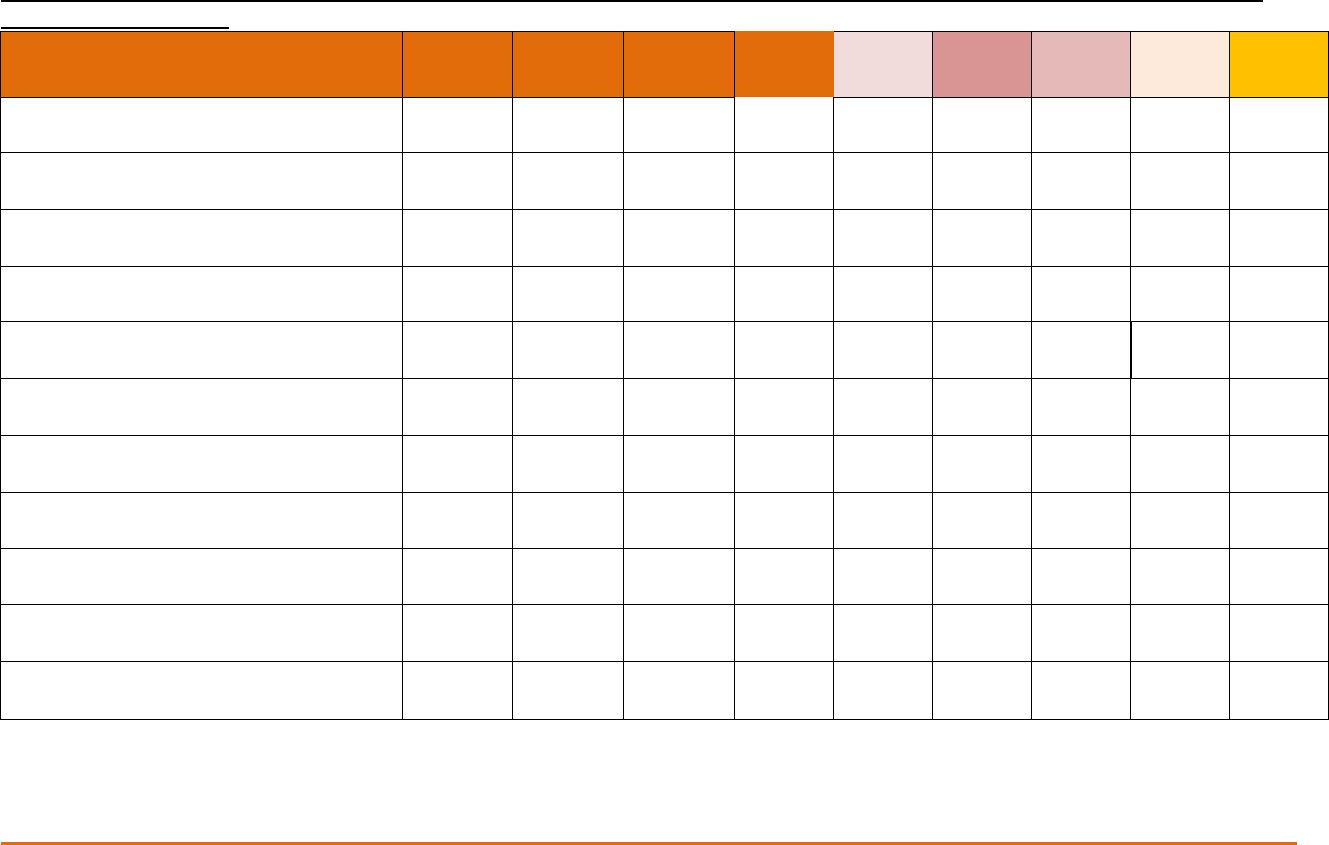
CALIFORNIA TRAFFIC SAFETY SURVEY 2023 DATA ANALYSIS 35
Safety Problems Experienced as Pedestrian or Bicyclist (Q23) by Region and Wave
The distribution of responses about the safety problems experienced as a pedestrian or bicyclist by California region, as well as comparison with
previous years’ data (Table Q23_2) show no significant differences between the regions, or the years.
Table Q23_2. “Think of the times you have been a pedestrian or bicyclist in the last 6 months. What safety problems did you experience, if
any?” by region and year
Q23 by region
Northern
California
Central
California
Southern
California
Total
2023
Total
2022
Total
2021
Total
2020
Total
2019
Total
2018
Cars going too fast
486
207
869
1,562
1,581
1,507
1,598
336
239
21.8%
21.8%
21.3%
21.5%
21.7%
20.2%
20.7%
17.7%
12.3%
Cars not stopping
458
196
795
1,449
1,479
1,337
1,403
432
336
20.6%
20.7%
19.5%
20.0%
20.3%
17.9%
18.1%
22.8%
17.3%
Distracted drivers using cell phones
314
153
649
1,117
1,114
1,057
1,246
348
426
14.1%
16.2%
15.9%
15.4%
15.3%
14.2%
16.1%
18.4%
21.9%
Lots of traffic
227
99
430
756
750
819
791
98
106
10.2%
10.5%
10.6%
10.4%
10.3%
11.0%
10.2%
5.2%
5.5%
Almost getting hit by a car or bike**
213
84
415
711
698
742
741
197
185
9.6%
8.8%
10.2%
9.8%
9.6%
10.0%
9.6%
10.4%
9.5%
Lack of sidewalks or bike lanes*
217
96
394
707
705
914
858
37
52
9.8%
10.2%
9.7%
9.8%
9.7%
12.3%
11.1%
2.0%
2.7%
Bicyclists not stopping
217
71
329
617
609
644
718
69
67
9.7%
7.5%
8.1%
8.5%
8.4%
8.6%
9.3%
3.6%
3.5%
None of the above
41
22
99
162
174
385
320
308
352
1.8%
2.3%
2.4%
2.2%
2.4%
5.2%
4.1%
16.3%
18.1%
Have not been a pedestrian/bicyclist in
the last 6 months
38
20
82
140
143
15
--
--
--
1.7%
2.1%
2.0%
1.9%
2.0%
0.2%
All Other Responses Combined
16
1
11
29
30
32
62
55
162
0.7%
0.1%
0.3%
0.4%
0.4%
0.4%
0.6%
2.9%
8.4%
Total
2,226
950
4,074
7,250
7,282
7,451
7,736
1,894
1,942
100.0%
100.0%
100.0%
100.0%
100.0%
100.0%
100.0%
100.0%
100.0%
*”Lack of sidewalks” in 2020 and earlier surveys
**”Almost getting hit by a car” in 2020 and earlier surveys
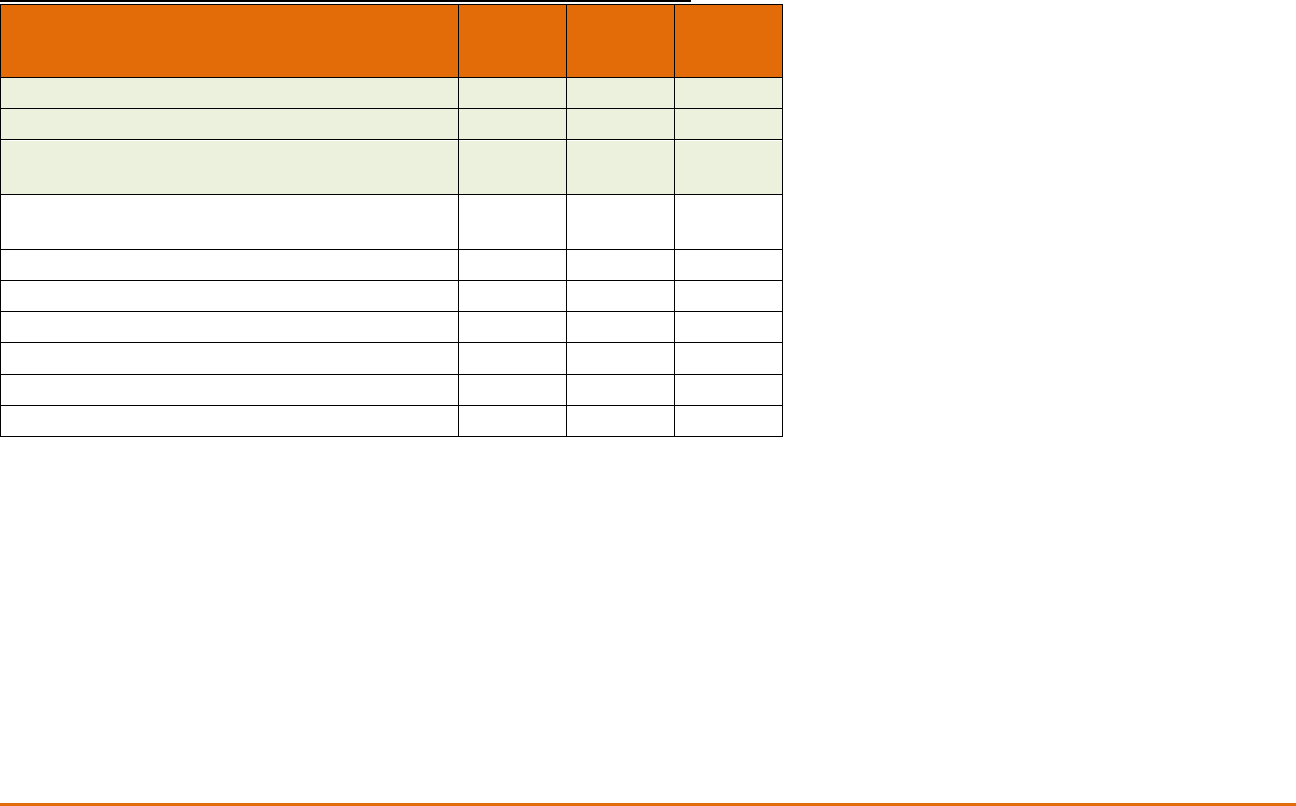
CALIFORNIA TRAFFIC SAFETY SURVEY 2023 DATA ANALYSIS 36
Safety Problems Experienced as Driver around Pedestrians and Bicyclists (Q24)
When asked about the safety problems experienced as a driver around pedestrians and bicyclists, more than half of respondents (50.9%) stated
“Pedestrians not using crosswalks” (Table Q24_1), three most frequently mentioned answers highlighted). This was followed by “Pedestrians
stepping off curb without looking”, mentioned by 45.6% of drivers, and “Bicyclists not stopping at stop signs or traffic lights” (41.9%).
Table Q24_1. Frequencies Q24 by percent of answers and percent of drivers
Q24 all answers combined
Count
% of
Answers
% of
Drivers
Pedestrians not using crosswalks
1,384
18.0%
50.9%
Pedestrians stepping off curb without looking
1,240
16.1%
45.6%
Bicyclists not stopping at stop signs or traffic
lights
1,140
14.8%
41.9%
Pedestrians/bicyclists distracted behavior
(phones, ear pods, headsets)
1,051
13.7%
38.7%
Pedestrians/bicyclists not being visible enough
970
12.6%
35.7%
Bicyclists being in the road or blocking traffic
857
11.1%
31.5%
Lack of sidewalks or bike lanes
816
10.6%
30.0%
None of the above
212
2.7%
7.8%
All Other Responses Combined
26
0.3%
1.0%
Total
7,695
100.0%
283.1%

CALIFORNIA TRAFFIC SAFETY SURVEY 2023 DATA ANALYSIS 37
Safety Problems Experienced as Driver around Pedestrians and Bicyclists (Q24) by Region and
Wave
Table Q24_2 outlines the responses to the survey item about safety problems experienced as a driver around pedestrians and bicyclists across
California regions and previous waves. The distribution of responses between regions, as well as between the years, show no significant
differences.
Table Q24_2. “Think of the times you have been a DRIVER around pedestrians or bicyclists in the last 6 months. What safety problems did you
experience, if any?” by region and year
Q24 by region
Northern
California
Central
California
Southern
California
Total
2023
Total
2022
Total
2021
Total
2020
Total
2019
Total
2018
Pedestrians not using crosswalks
429
193
762
1,384
1,261
1,548
1,612
300
294
18.1%
18.2%
17.9%
18.0%
17.9%
18.2%
18.5%
15.2%
14.8%
Pedestrians stepping off curb without
looking
389
170
680
1,240
1,086
1,399
1,453
321
179
16.4%
16.0%
16.0%
16.1%
15.4%
16.4%
16.7%
16.2%
9.0%
Bicyclists not stopping at stop signs or
traffic lights
366
152
622
1,140
1,049
1,255
1,385
321
179
15.4%
14.3%
14.6%
14.8%
14.9%
14.7%
15.9%
10.7%
10.6%
Pedestrians/bicyclists distracted behavior
(phones, ear pods, headsets)
327
151
574
1,051
902
1,087
1,174
332
264
13.8%
14.2%
13.5%
13.7%
12.8%
12.8%
13.5%
16.8%
13.3%
Pedestrians/bicyclists not being visible
enough
303
135
532
970
838
1,117
1,143
194
169
12.8%
12.7%
12.5%
12.6%
11.9%
13.1%
13.1%
9.8%
8.5%
Bicyclists being in the road or blocking
traffic
247
124
485
857
871
960
1,047
269
187
10.4%
11.7%
11.4%
11.1%
12.4%
11.3%
12.0%
13.6%
9.4%
Lack of sidewalks or bike lanes*
240
101
475
816
757
905
652
38
108
10.2%
9.5%
11.1%
10.6%
10.8%
10.6%
7.5%
1.9%
5.5%
None of the above
60
35
117
212
238
221
223
242
356
2.5%
3.3%
2.7%
2.7%
3.4%
2.6%
2.6%
12.2%
18.0%
All Other Responses Combined
6
3
17
26
29
12
36
47
76
0.3%
0.2%
0.4%
0.3%
0.4%
0.1%
0.4%
2.4%
3.8%
Total
2,367
1,064
4,264
7,695
7,032
8,516
8,725
1,979
1,942
100.0%
100.0%
100.0%
100.0%
100.0%
100.0%
100.0%
100.0%
100.0%
*”Lack of sidewalks or clear crosswalks” in 2020 survey
